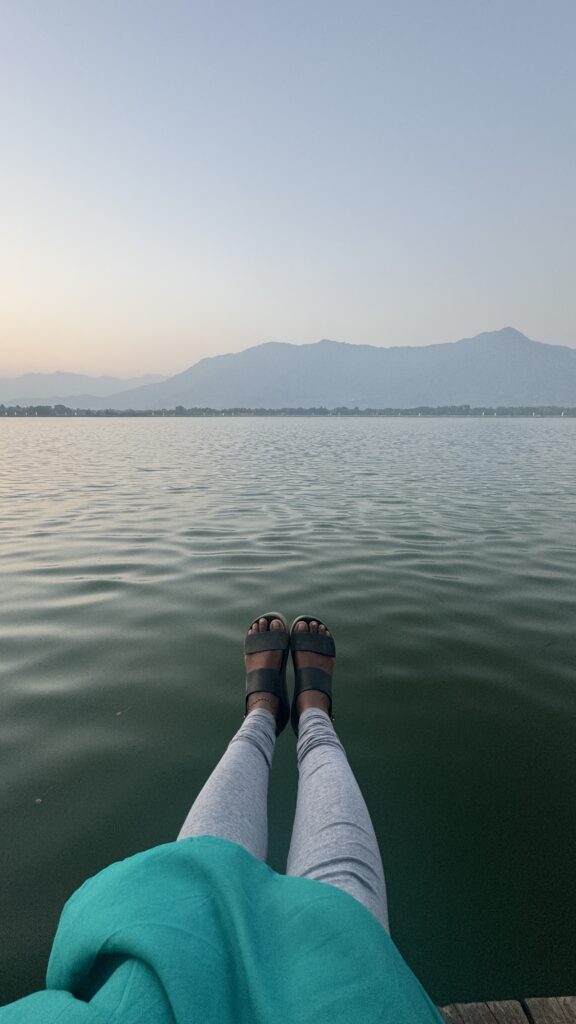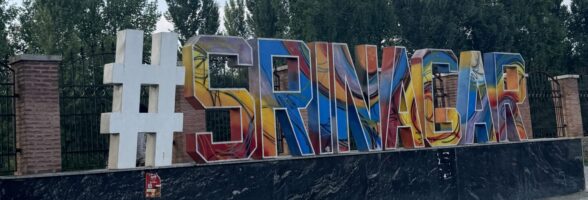For those of you who know, HackerRank does a mid year break where all the HackerRankers switch off for a week with weekends involved becomes 9 whole days, rejuvenate and come back more energised! Almost like a summer vacation :D. Amazing right? I know, it is such a dream!!
Last year I solo travelled to Pondicherry and spent an entire week just chilling by the beaches and cafes, reading books, talking to strangers and walking around every nook and corner of the small city! I met some amazing people and had some crazy experiences that I could never have imagined. It was the same time of the year again and having done the trek recently, I actually considered just being lazy at home and catching up on sleep, books and completing the long pending household chores. But all thanks to Raj, he pushed me to book tickets to take a trip because he truly understand the value of these time offs as he doesn’t get the liberty of it (sorry but not sorry :P)
About Srinagar: The Jewel of Kashmir in Early July
Nestled in the heart of the Kashmir Valley, Srinagar is a city that feels like a dream come to life. Known as the “Venice of the East,” it enchants visitors with its serene Dal Lake, where houseboats and shikaras (traditional wooden boats) glide gracefully across the water, reflecting the surrounding snow-capped mountains and lush gardens. Wandering through the Mughal Gardens, you’ll find yourself surrounded by vibrant blooms and meticulously landscaped terraces, echoing tales of the past. Srinagar’s old city buzzes with life, its markets filled with the rich aroma of spices, the vibrant hues of Pashmina shawls, and the allure of handcrafted treasures. The local cuisine is a journey in itself, with mouthwatering dishes and the fragrant kahwa tea offering a taste of the region’s rich culinary heritage. The warm hospitality of the Kashmiri people adds to the city’s charm, making every visitor feel at home. In Srinagar, every corner holds a story, every view is a postcard, and every moment is a memory waiting to be made. It’s a place where nature’s beauty and human warmth come together to create an unforgettable experience for anyone visiting the place.
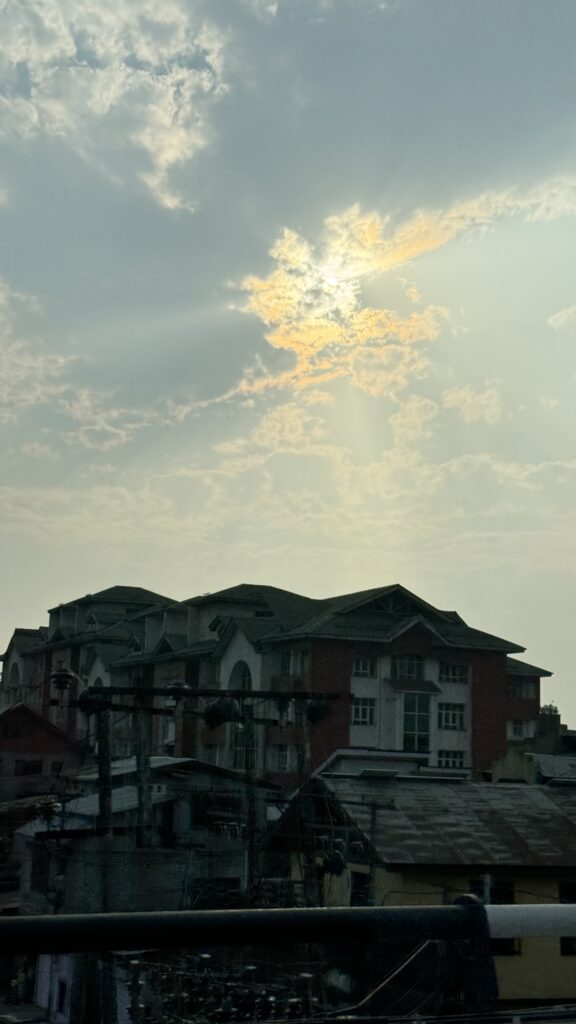
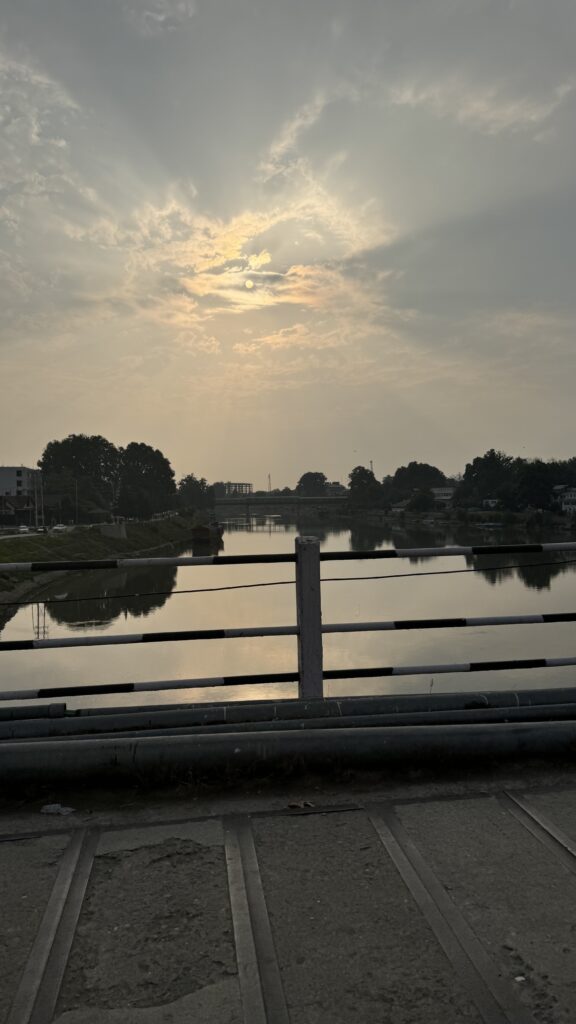
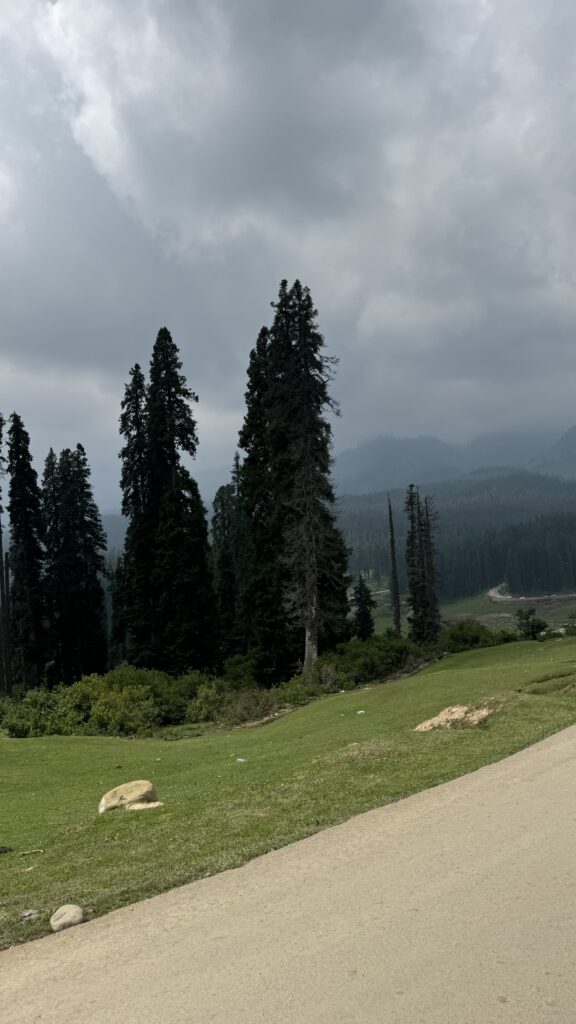
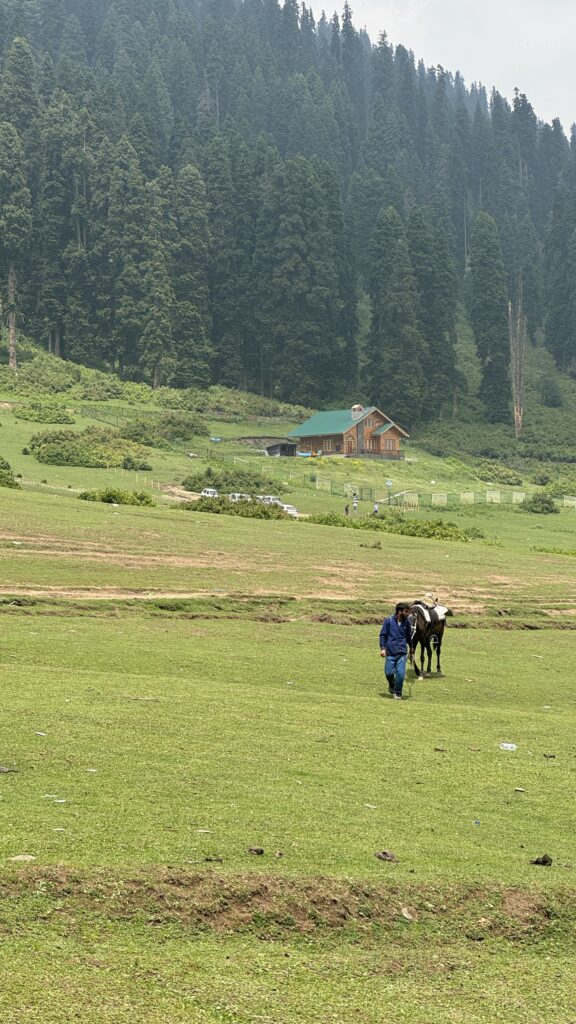
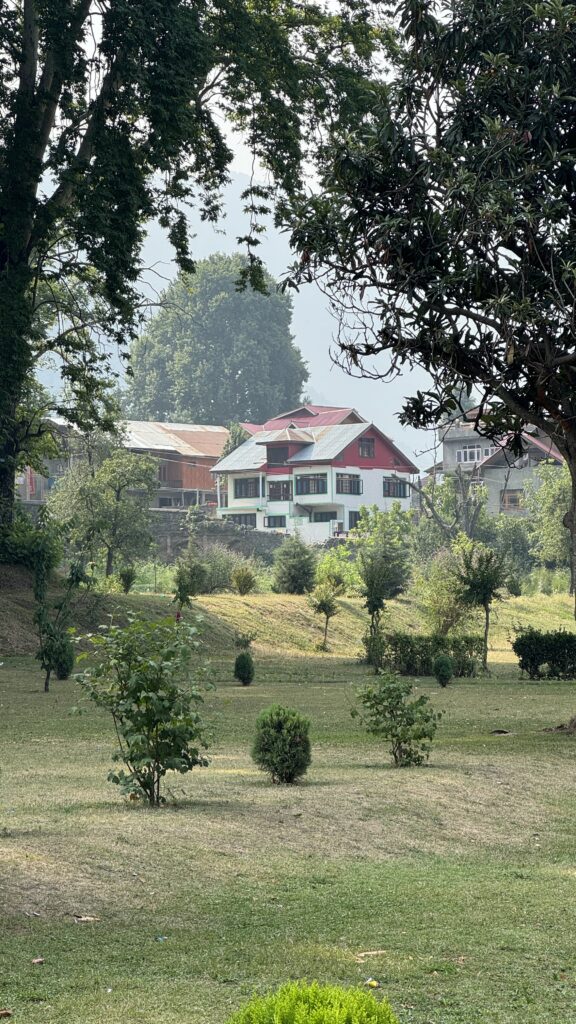
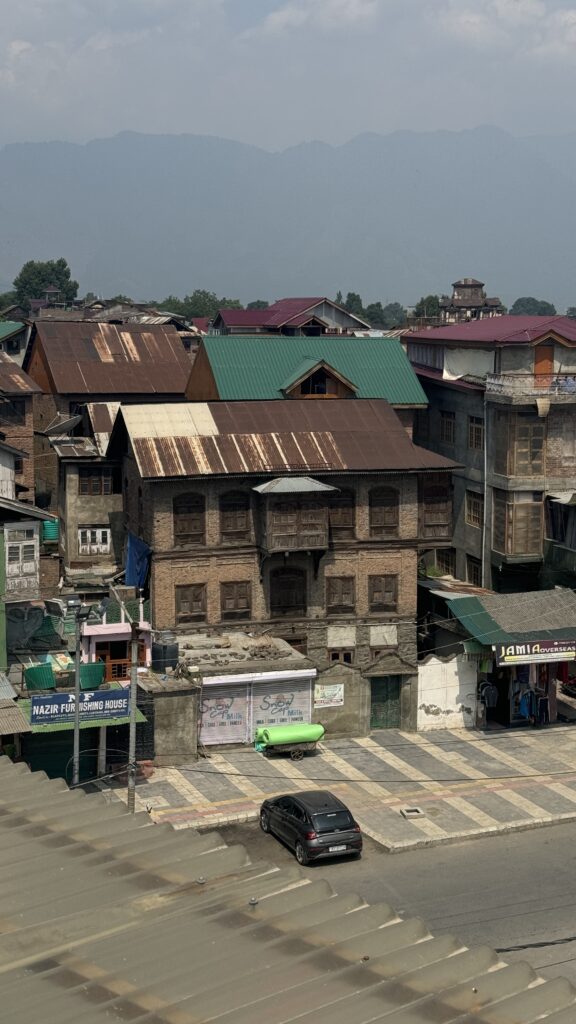
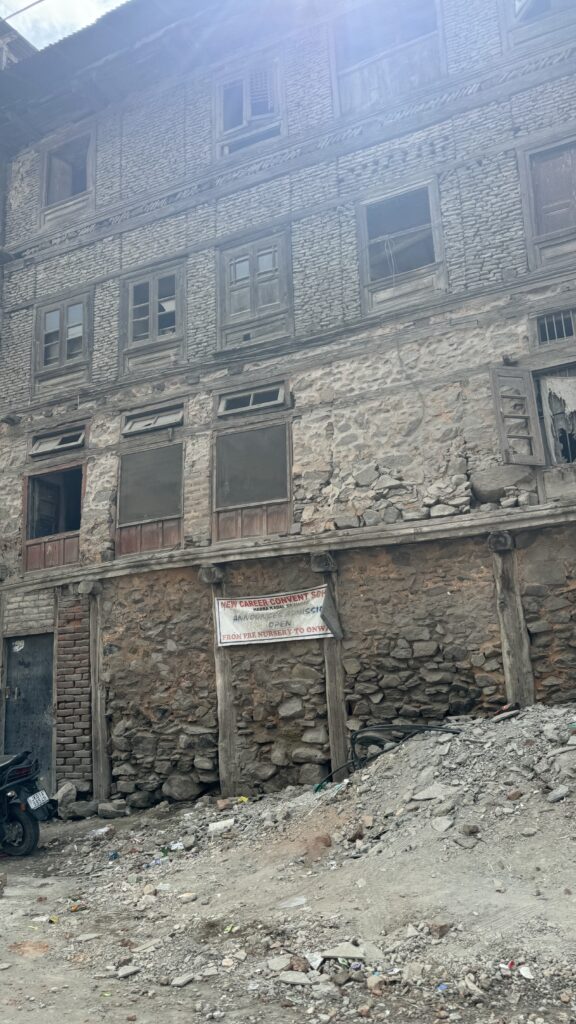
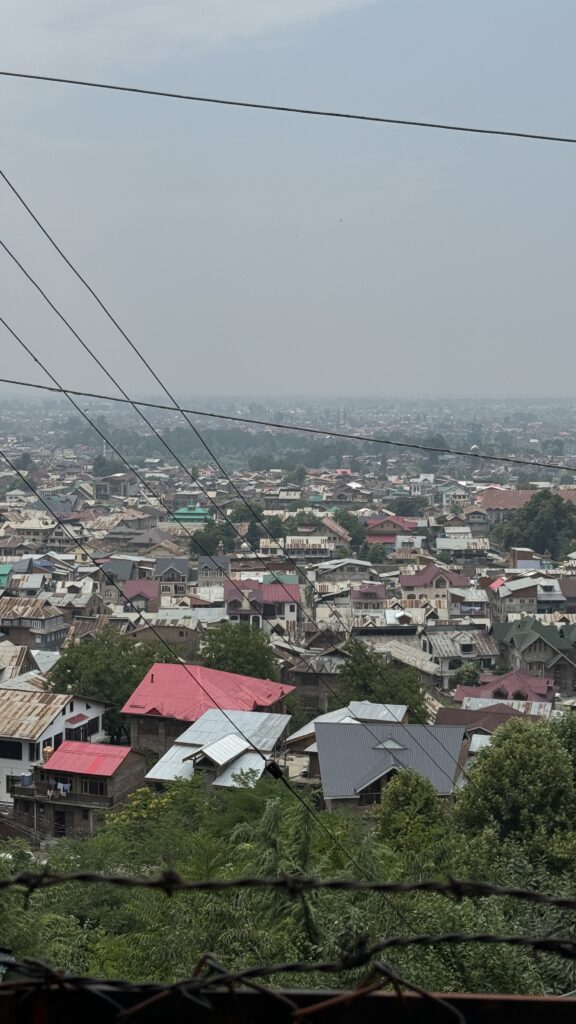
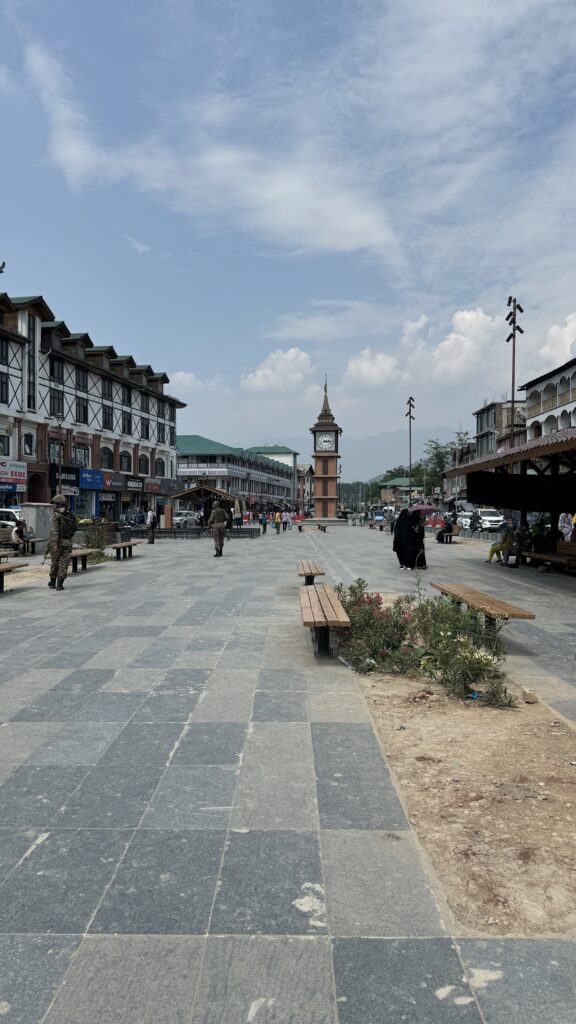
My Journey:
Let’s first talk about the things I did and places that I visited!
After wrapping up a lot of work on Friday, I started packing for the trip that very night. My trip started super early on a Saturday morning and the last 24 hours felt like it ran at a 3x speed. To add on to my adversity, on my journey from airport to the hostel, I was told that the Governor was in town which resulted in almost a 3 hour traffic jam. Instead of reaching my hostel in 28 minutes, it took me close to 170 minutes. I was dead and exhausted by the time I checked in and while grabbing a quick dinner met a few folks who were planning to visit Doodhpatri the next day.
I had no idea where Doodhpatri was but I agreed to tag along. It was one of the best decisions but on a wrong day. Since it was a Sunday that we were there, all the localities were there too picnicking. The rush and traffic jam was horrible and one of the worst nightmare come true. Luckily the cab driver that came along with us took on a trail that went off track the regular path and we went into the forest for a good 2 hours, in a path with hardly any human in sight and had the river Shaliganga flow through rocks beneath it making it seem like milk, hence the name Doodhpatri meaning valley of milk.
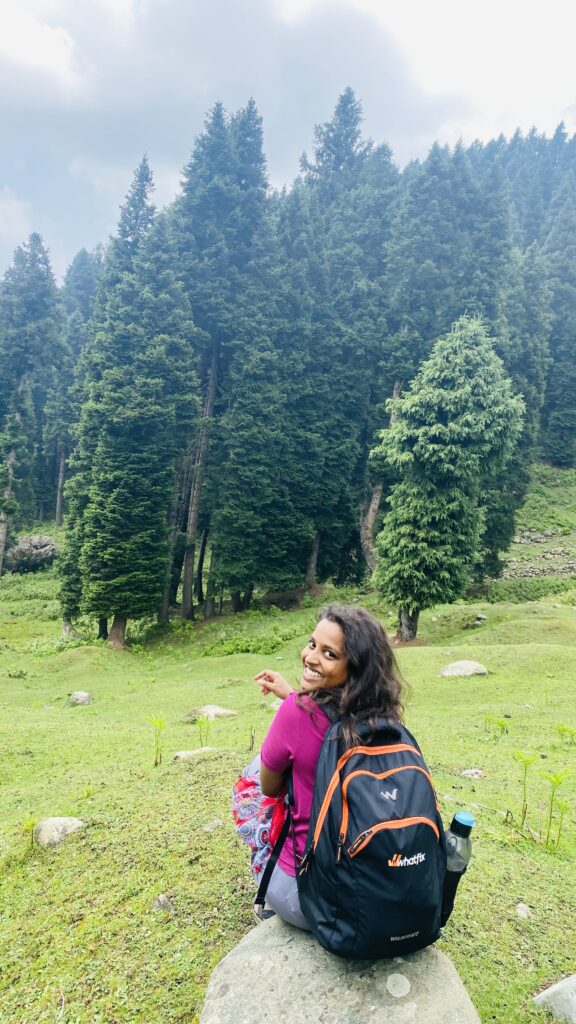
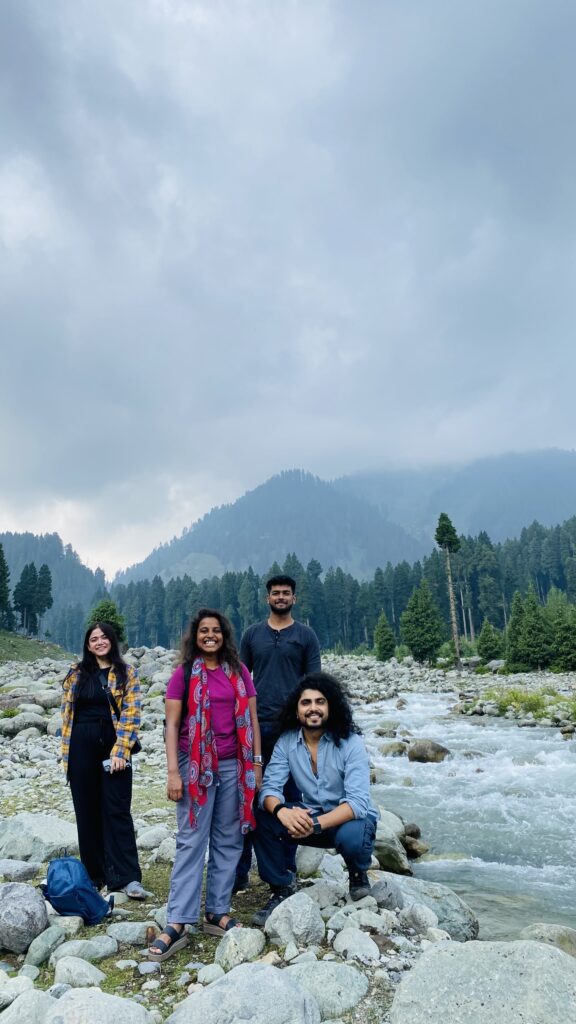
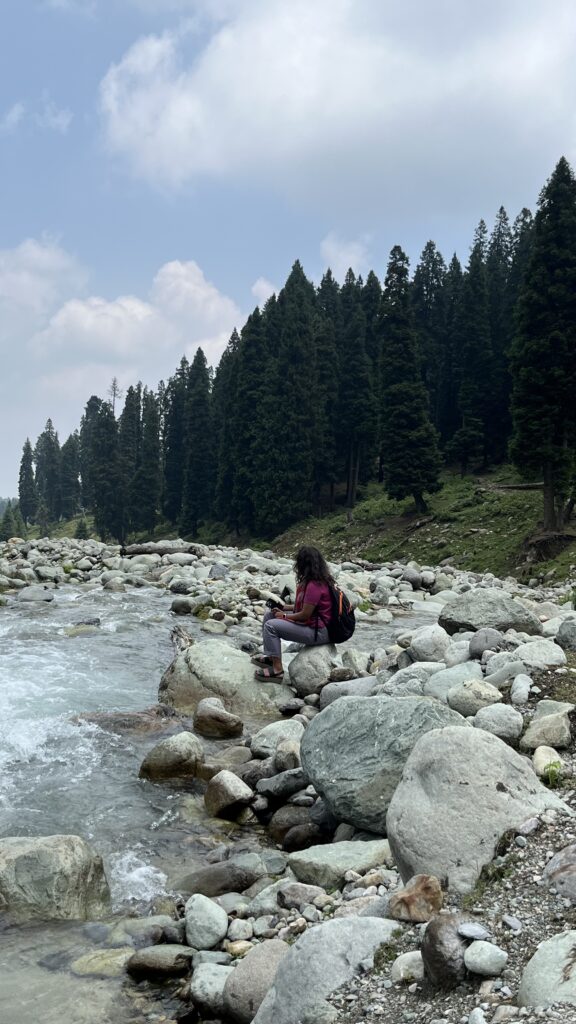
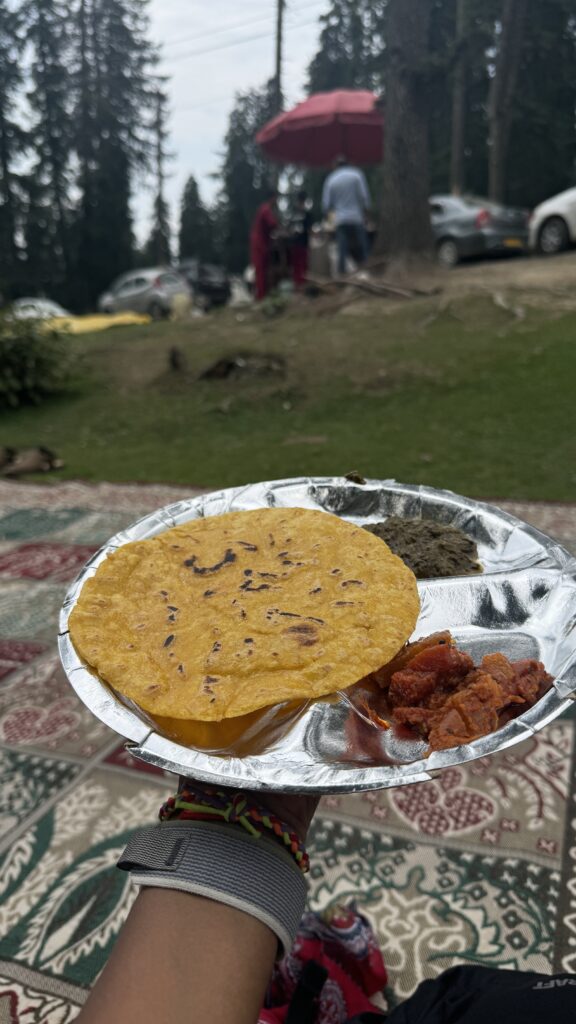
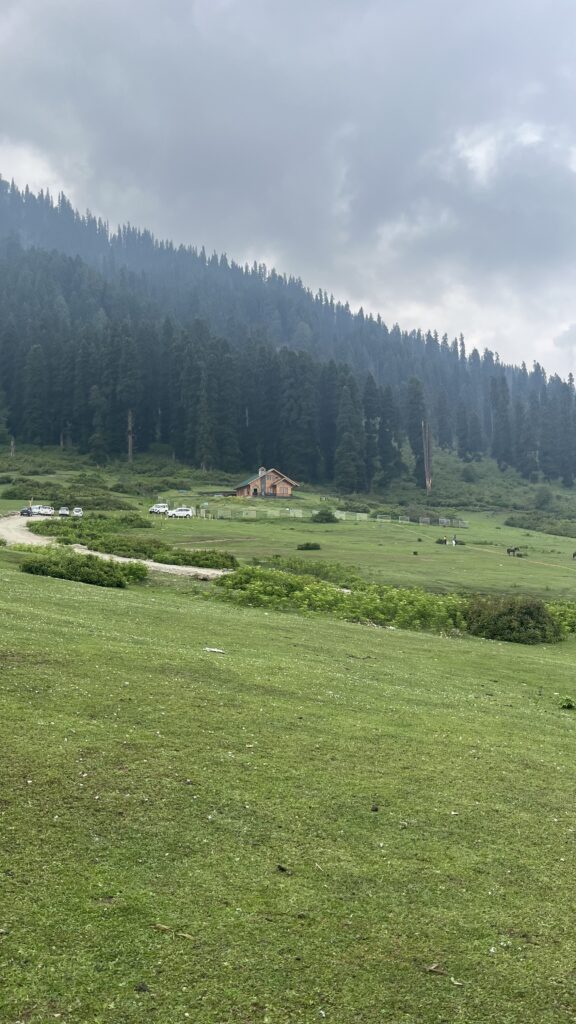
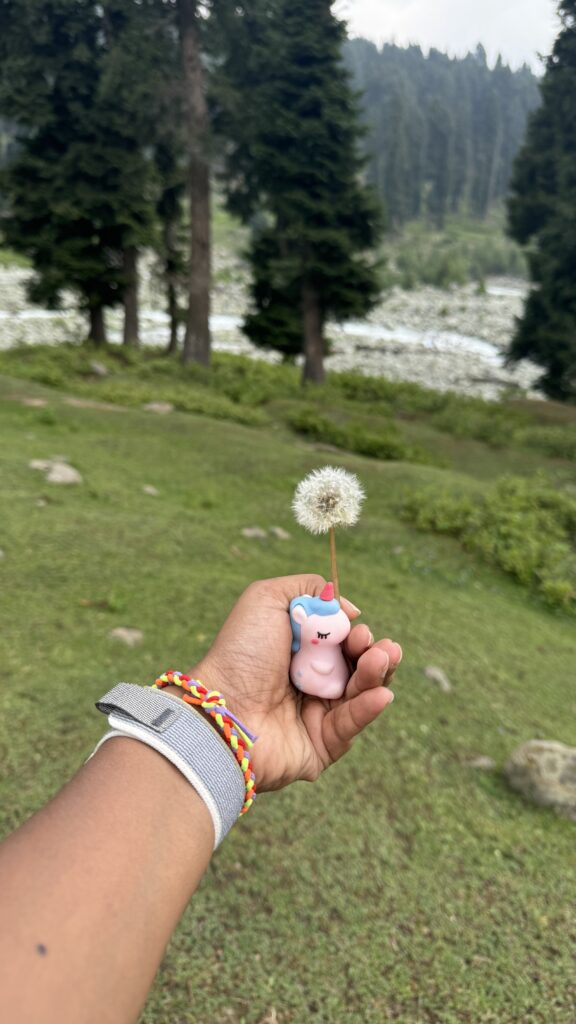
Sujith, Swati and Srikanth – people that I had just met a few hours ago, started to warm up and from small talks, we started talking about common interests and experiences. After a great trek, on the way back, we stopped by the road to have makki ka roti with Kashmiri saag which was delicious!
That evening we reached Srinagar and directly headed to a shikara ride to witness the beautiful sunset, visit the part of Dal lake that is habituated and shop from the floating markets! It was a good 1.5 hours in water, it was super calming and exciting to have experienced this side of Srinagar. I did a shikara ride a few days later too but early in the morning to witness the wholesale floating market where farmers get their produce and sell it to the other farmers/shopkeepers and buy from them too. Why does this happen in water and on boats you ask? It is because all these veggies are grown on water in what is called “chori ka zameen” (stolen land) because there is no land literally and the farmers manage to grow the veggies, flowers and all other produce in the water around of their houseboats. These produce are then taken to the mail markets like lal chowk, panch chowk etc to be sold to consumers. It was very fascinating to see the market. We were told that this market historically was run by the women of the society but due to political and safety issues, it transformed just a few years ago to a male-run market.
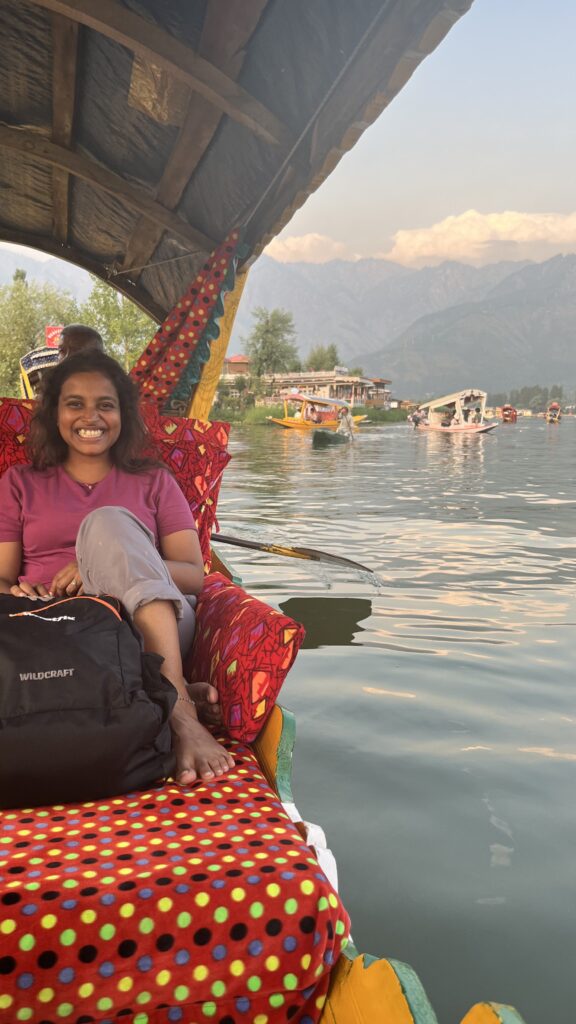
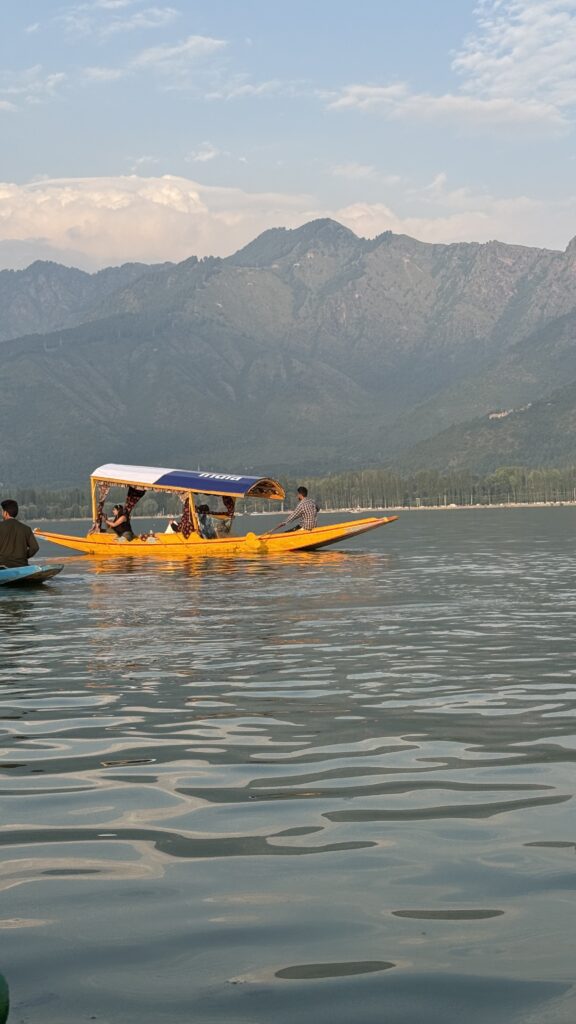
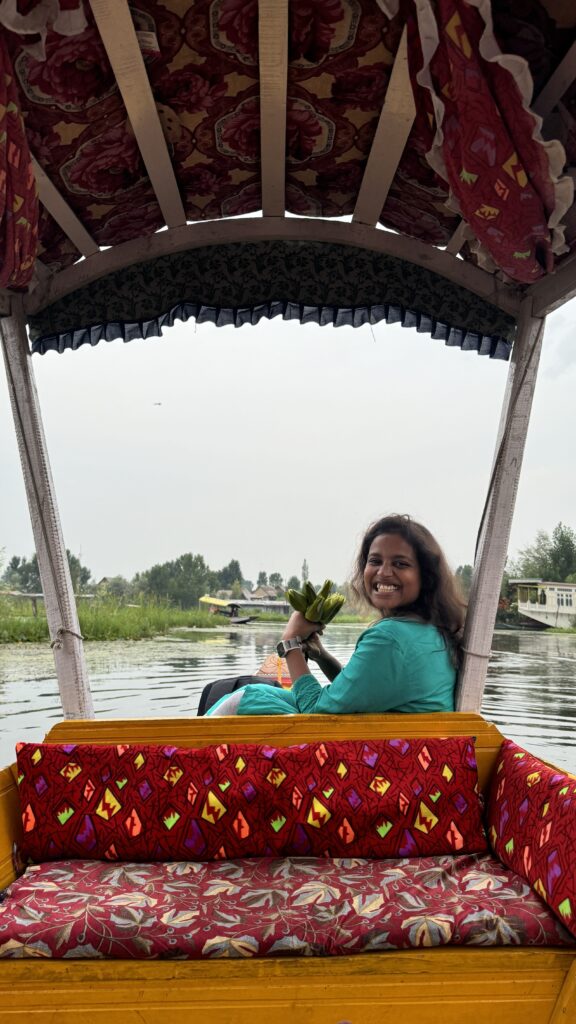
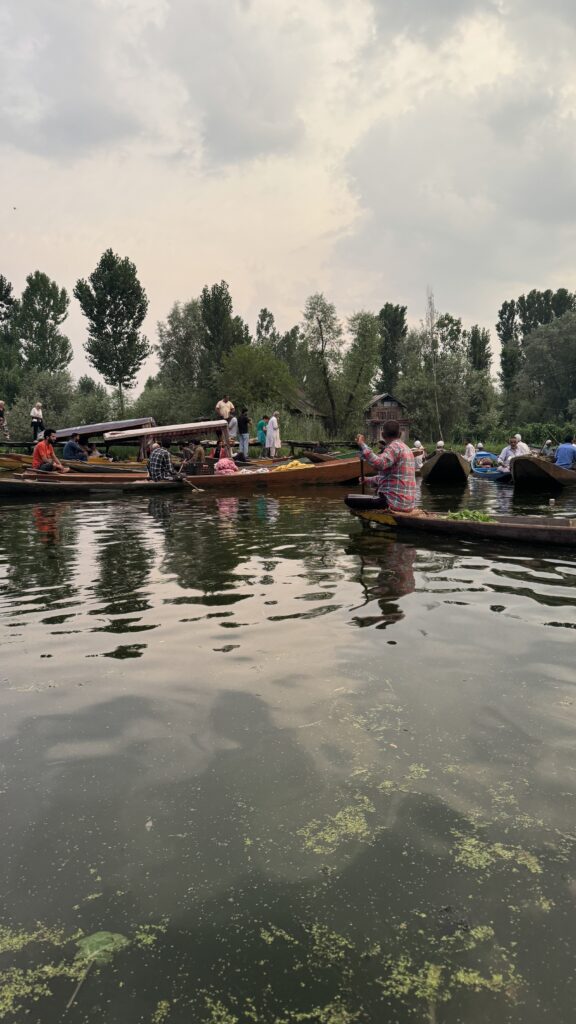
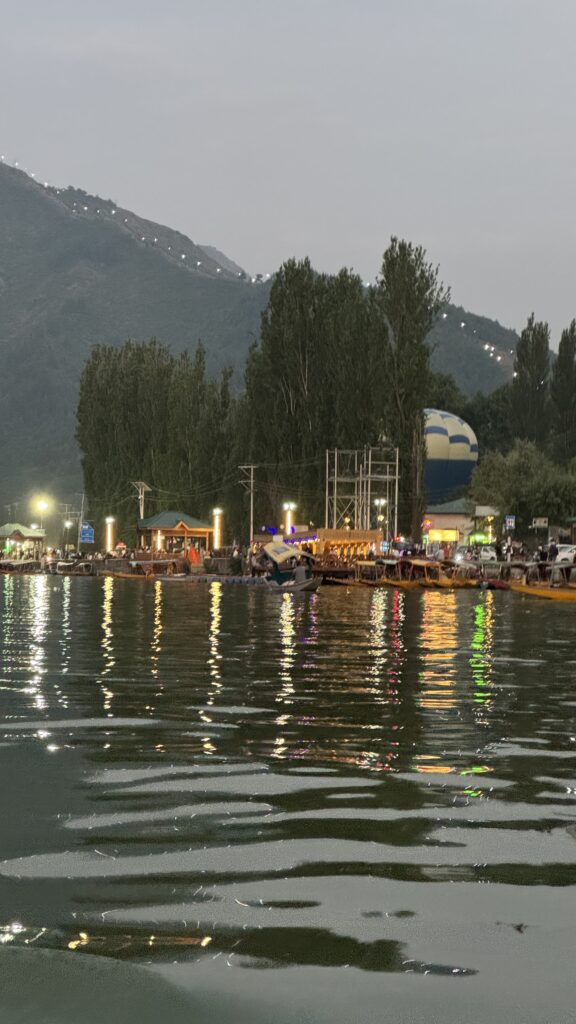
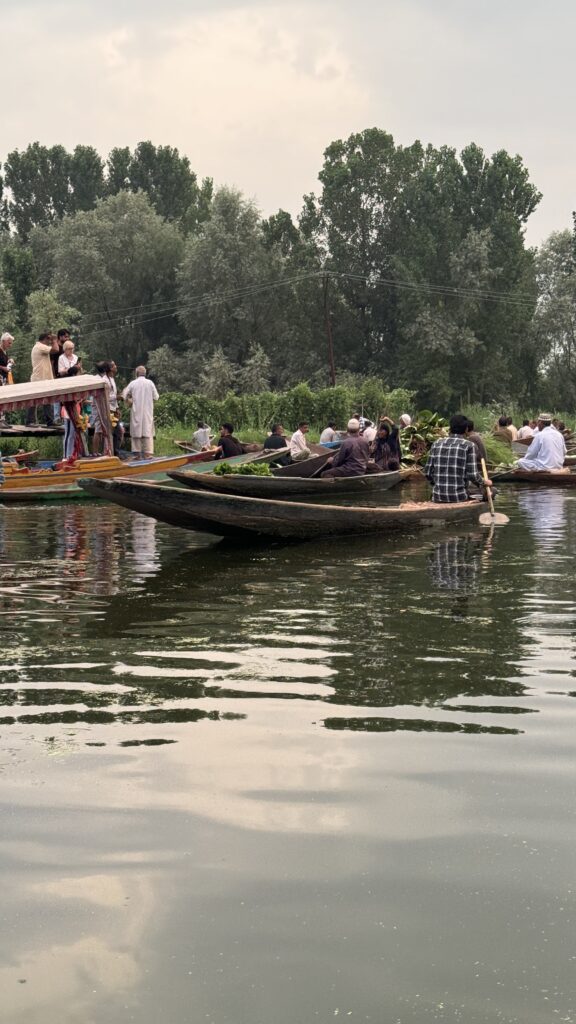
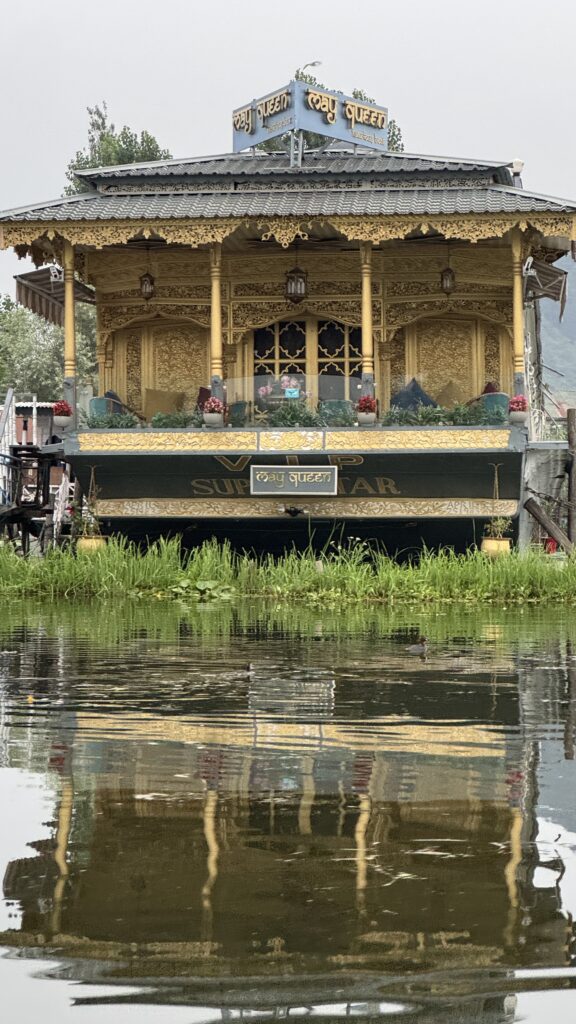
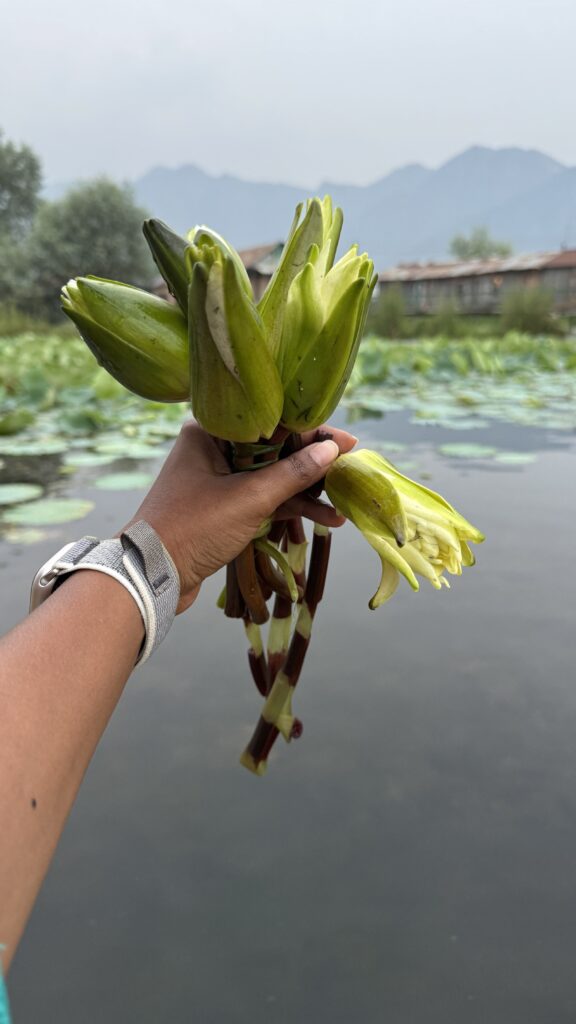
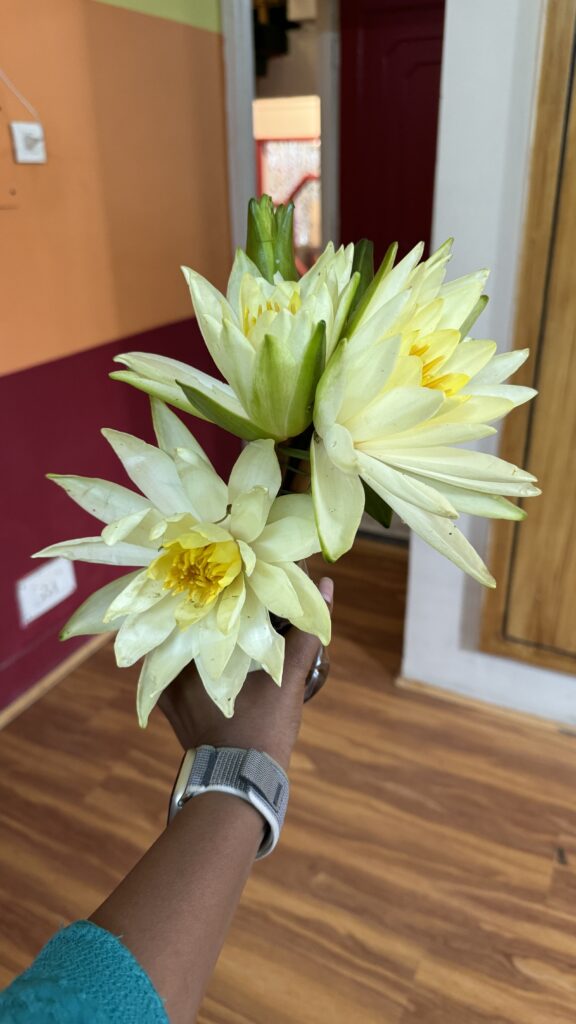
During the early morning ride, the shikhara rower got a bunch of water lilies for me. Because it was super early, it was in the bud form but the moment I came back to my room, I saw it bloomed into this beautiful bunch!
I also ended up visiting a lot of “bagh”(garden) – Mughal Gardens, Shalimar Bagh, Nishat Bagh, Chashme Shahi Garden and Nehru Memorial Botanical Garden. The tulip garden was unfortunately shut for construction and repair work. Here are some of my clicks from the gardens!
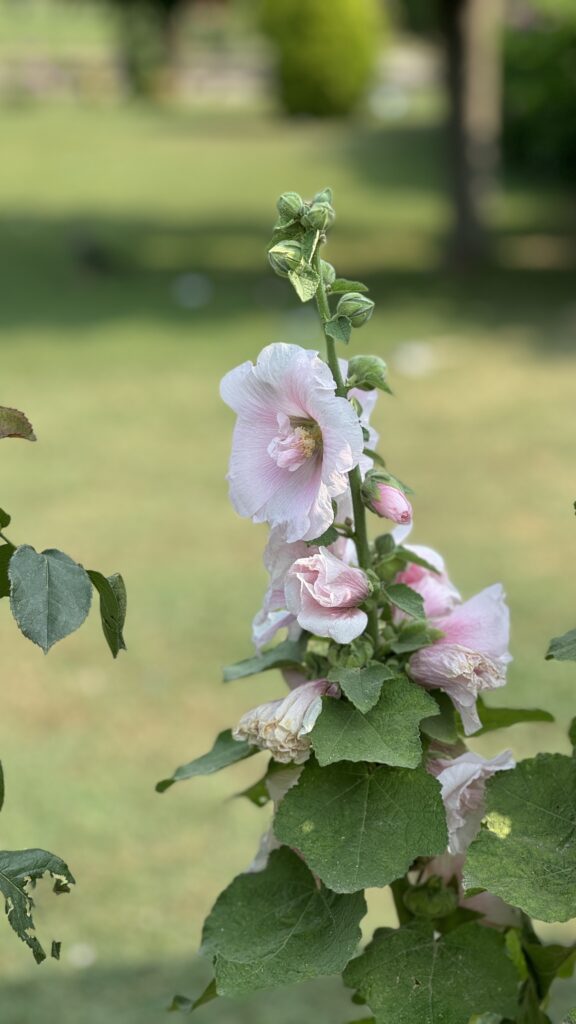
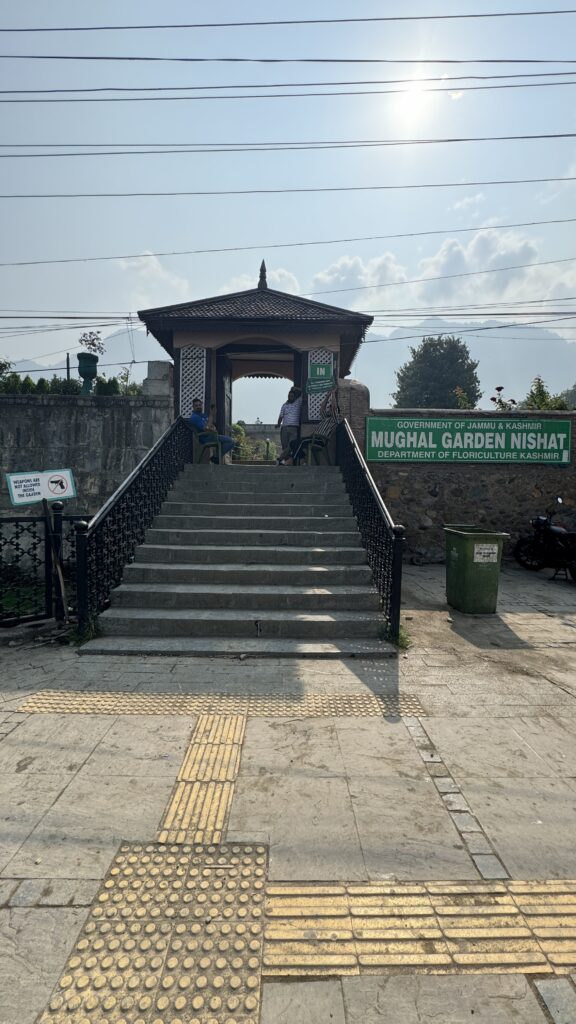
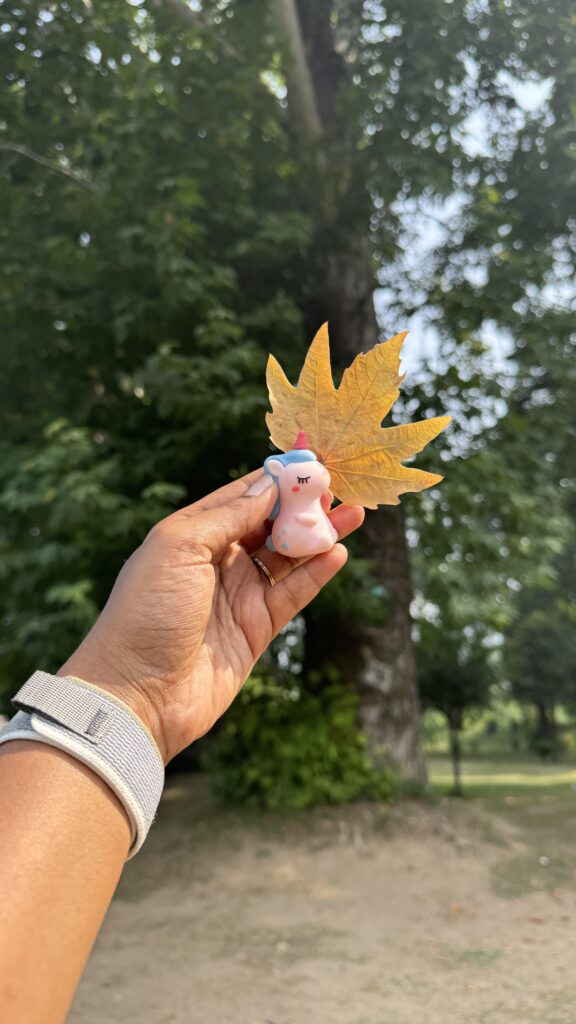
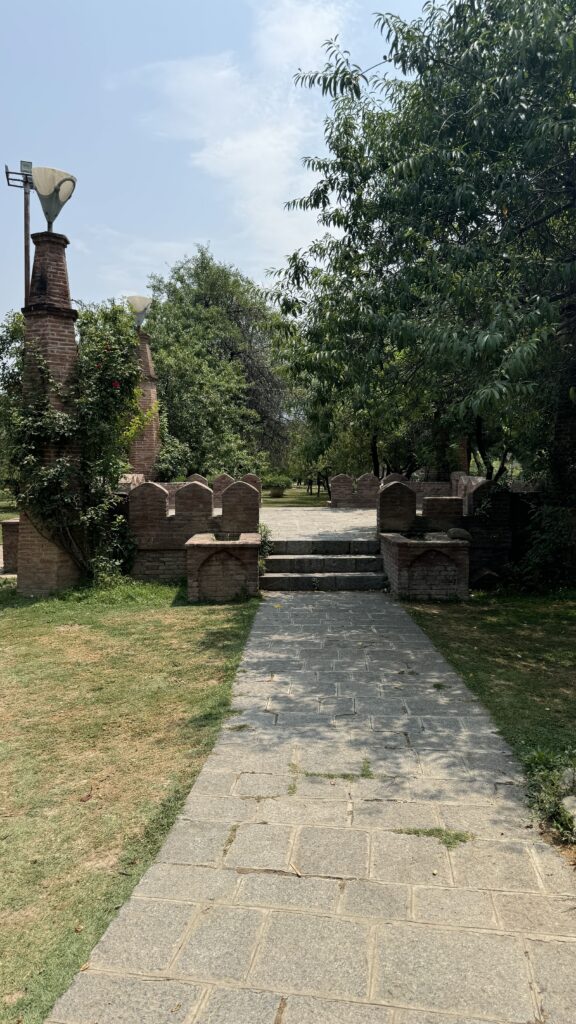
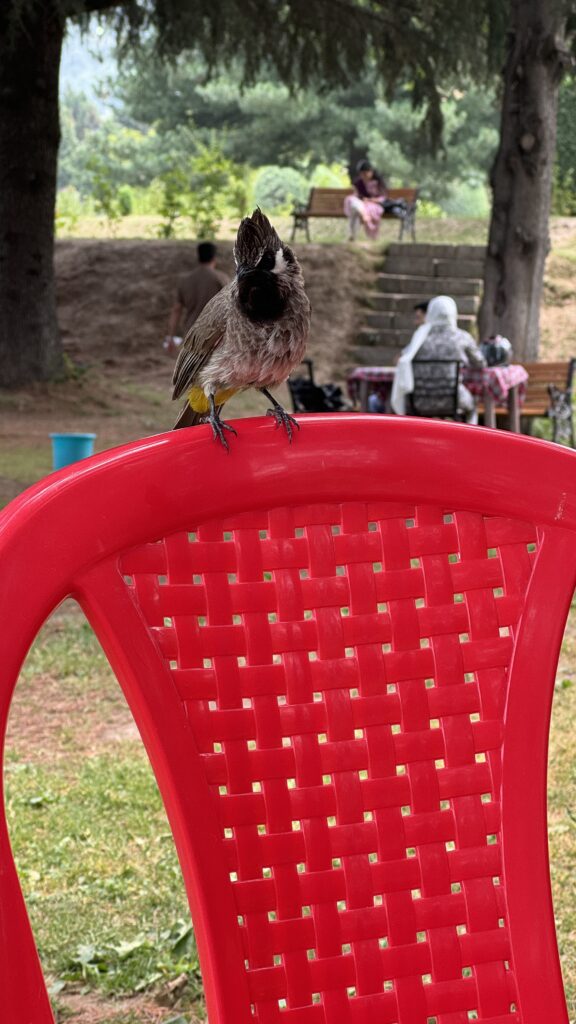
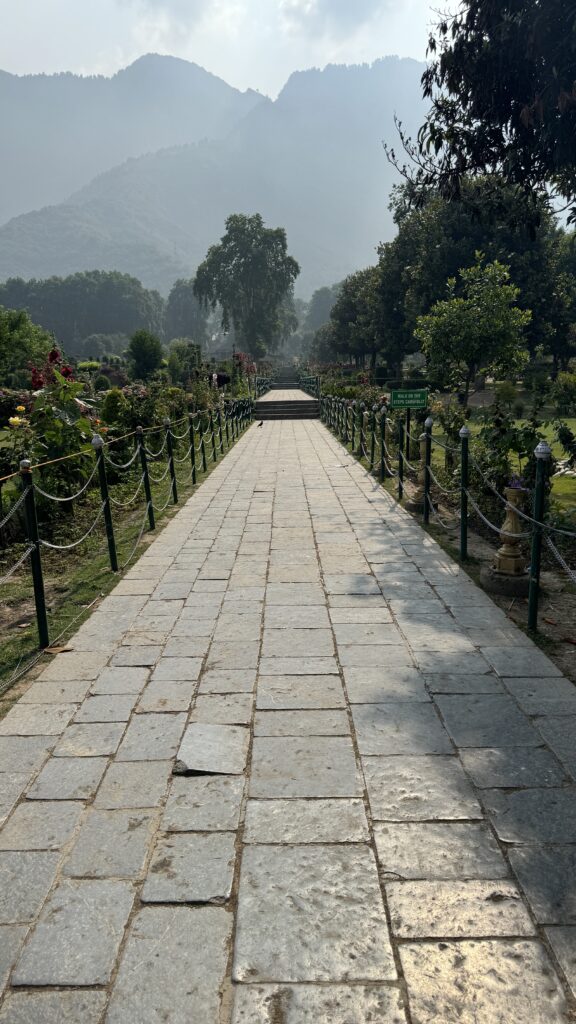
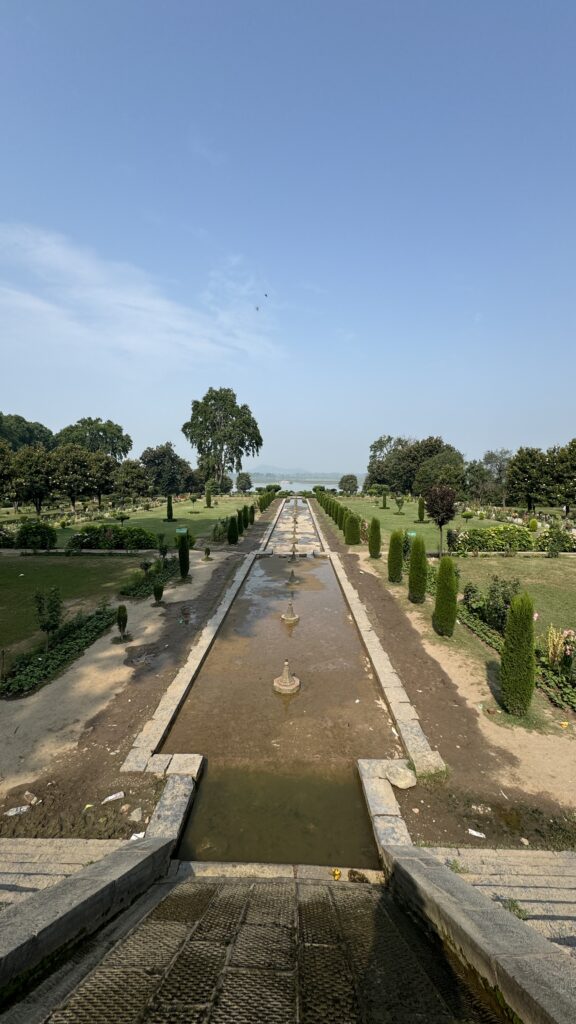
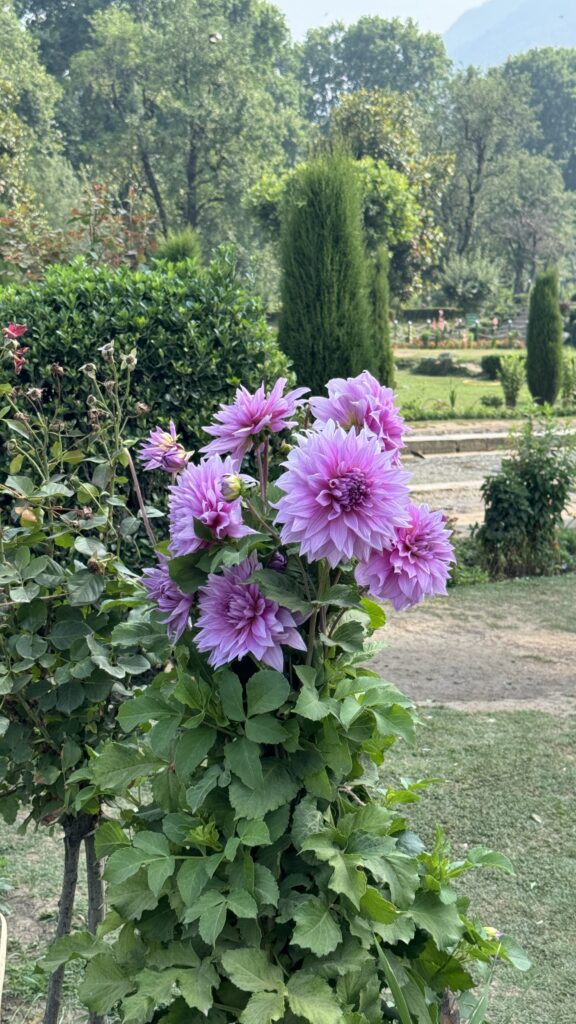
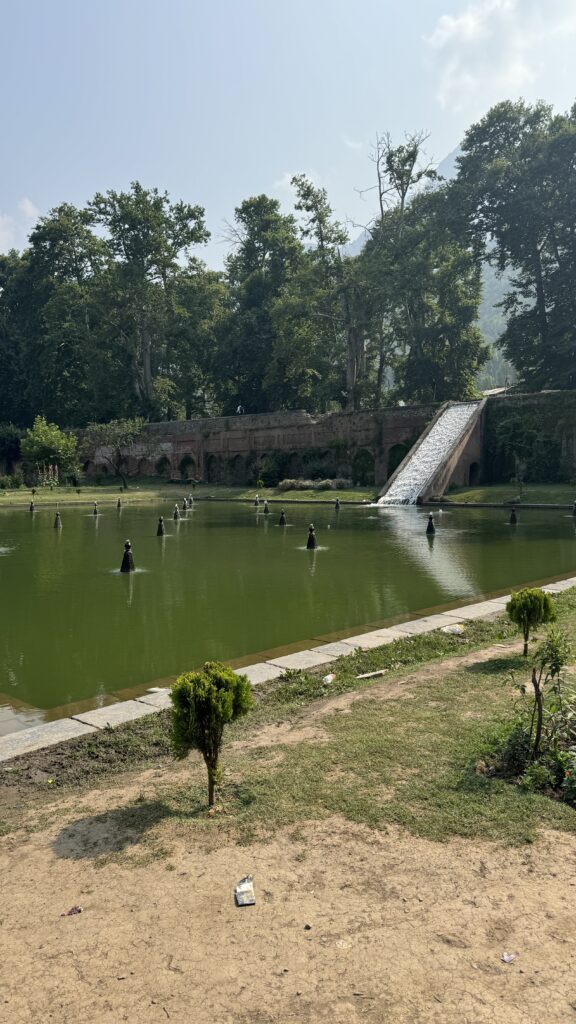
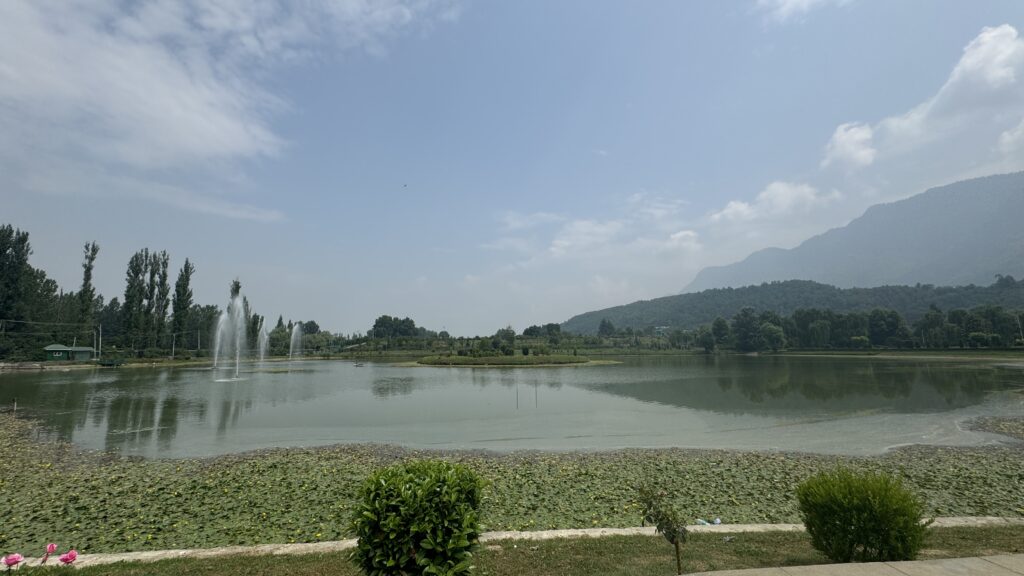
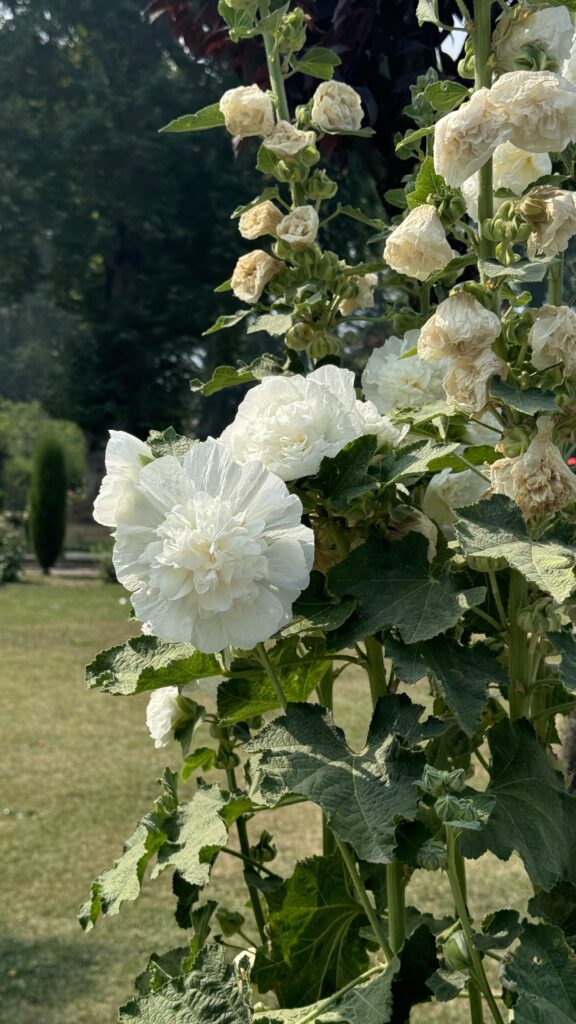
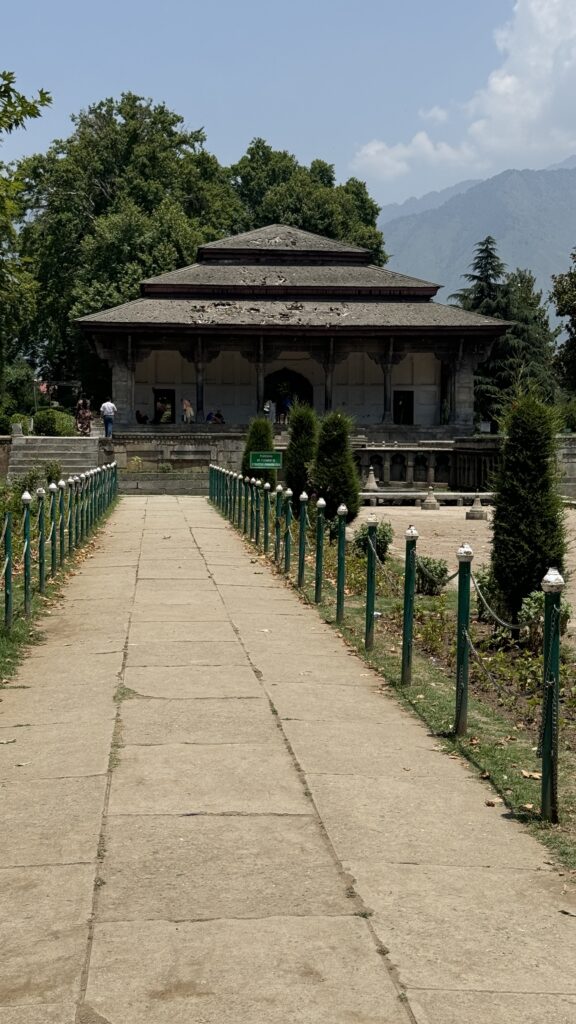
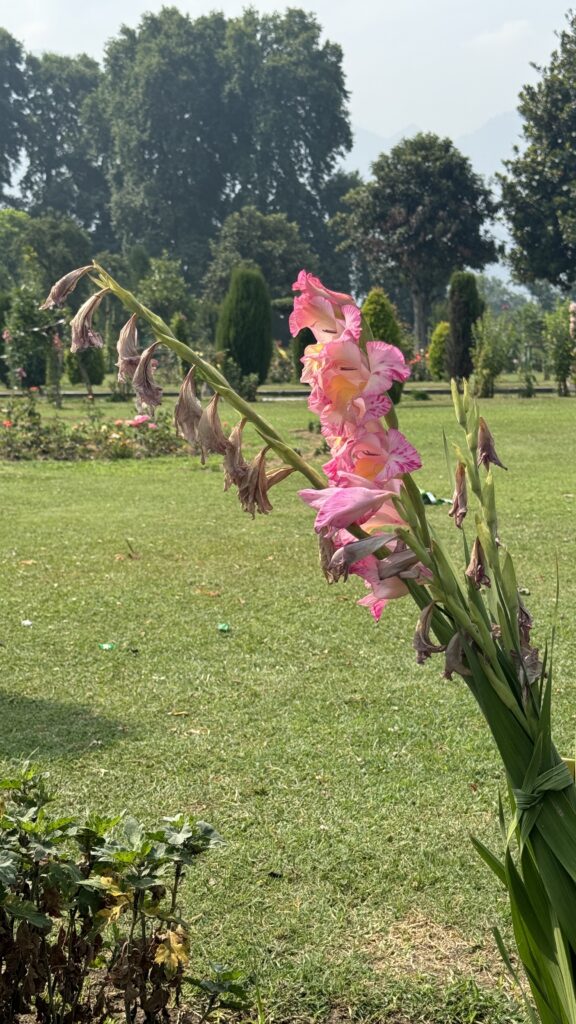
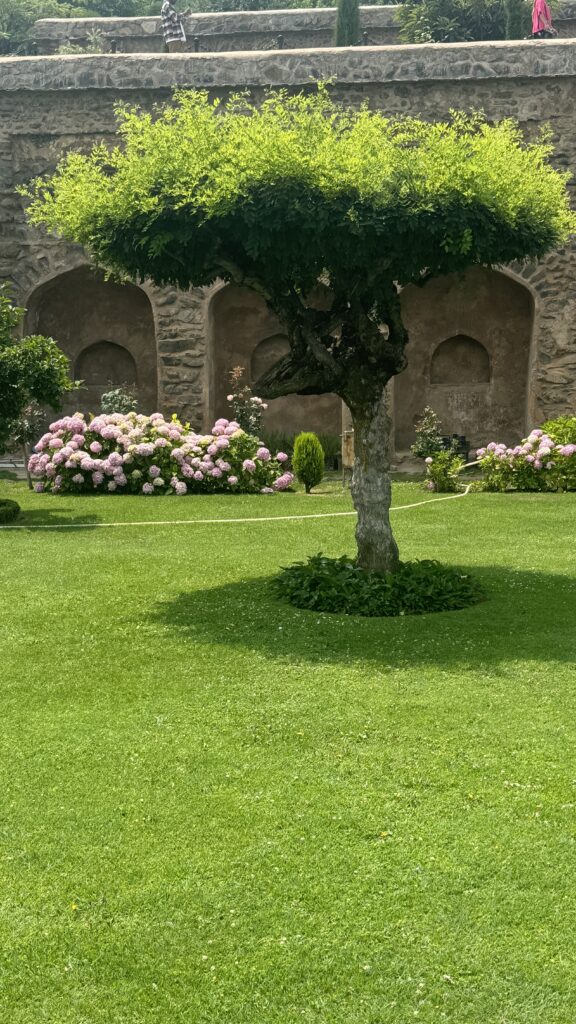
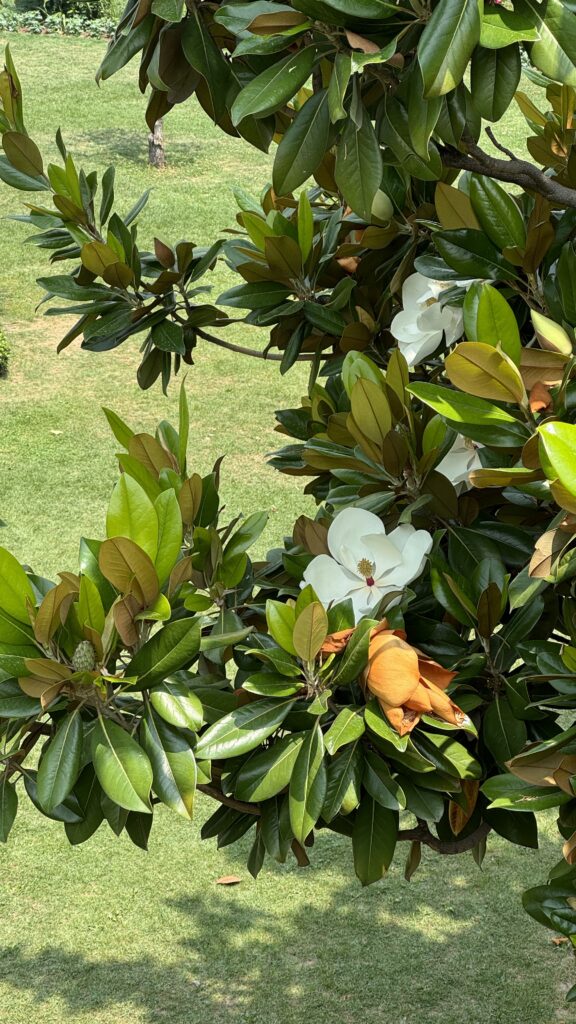
I also happened to visit Hazratbal Shrine called Dargah Sharif, is a Muslim shrine located in Hazratbal locality of Srinagar in Jammu and Kashmir, India. It contains a relic, Moi-e-Muqqadas, believed to be the hair of the Islamic prophet Muhammad. It was a beautiful experience going in there and seeing many people pray together. I wanted to experience the same place during the night with the lights and during a namaz time, so one of the days, I visited post my trip to Char Chinar!
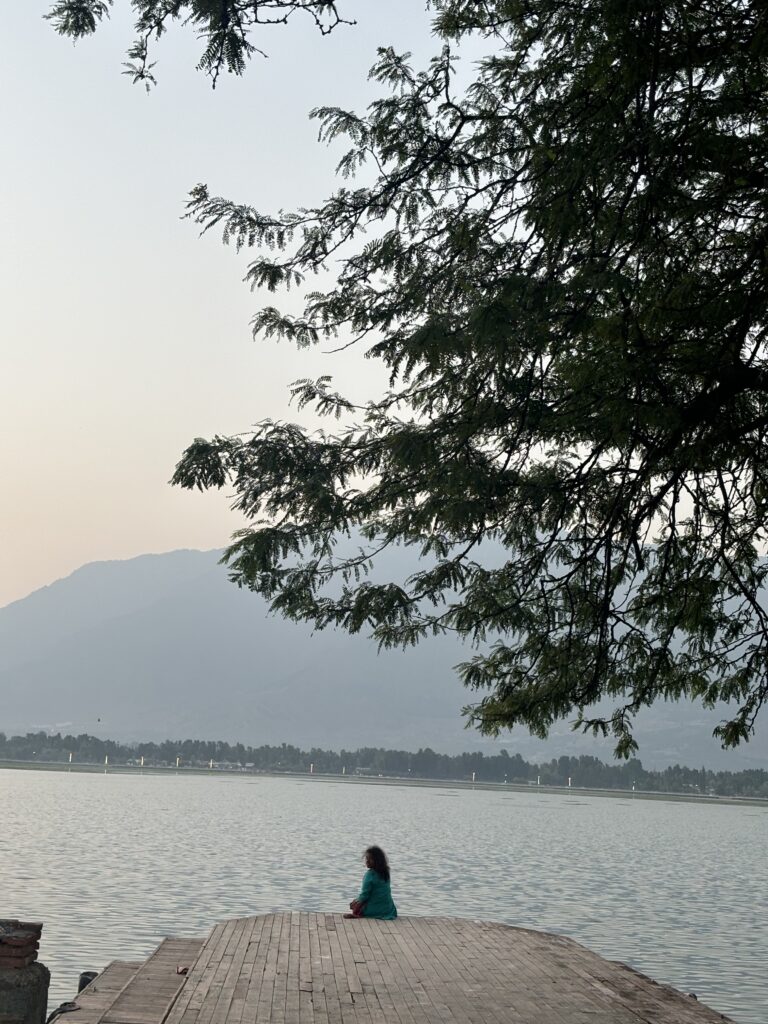
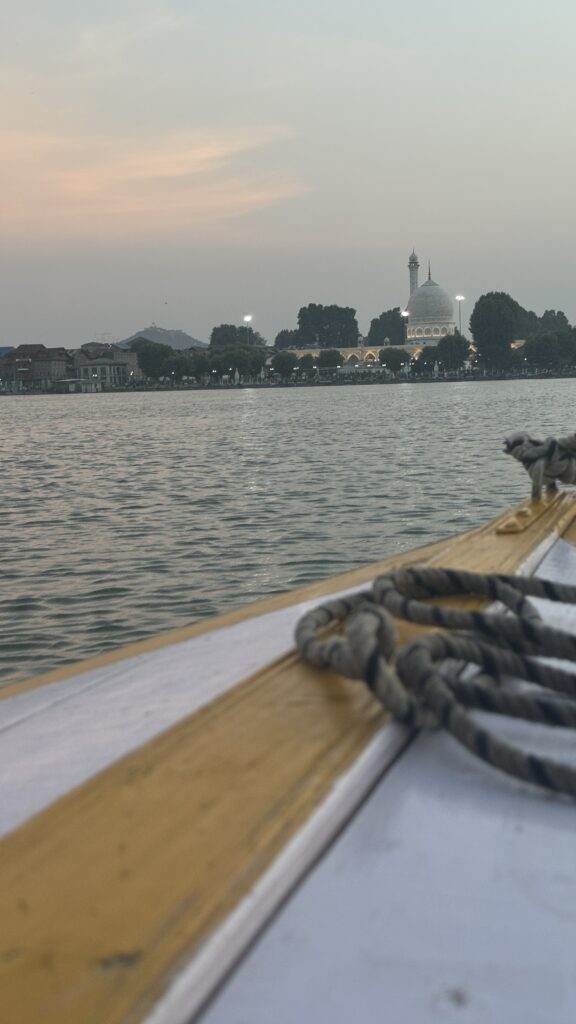
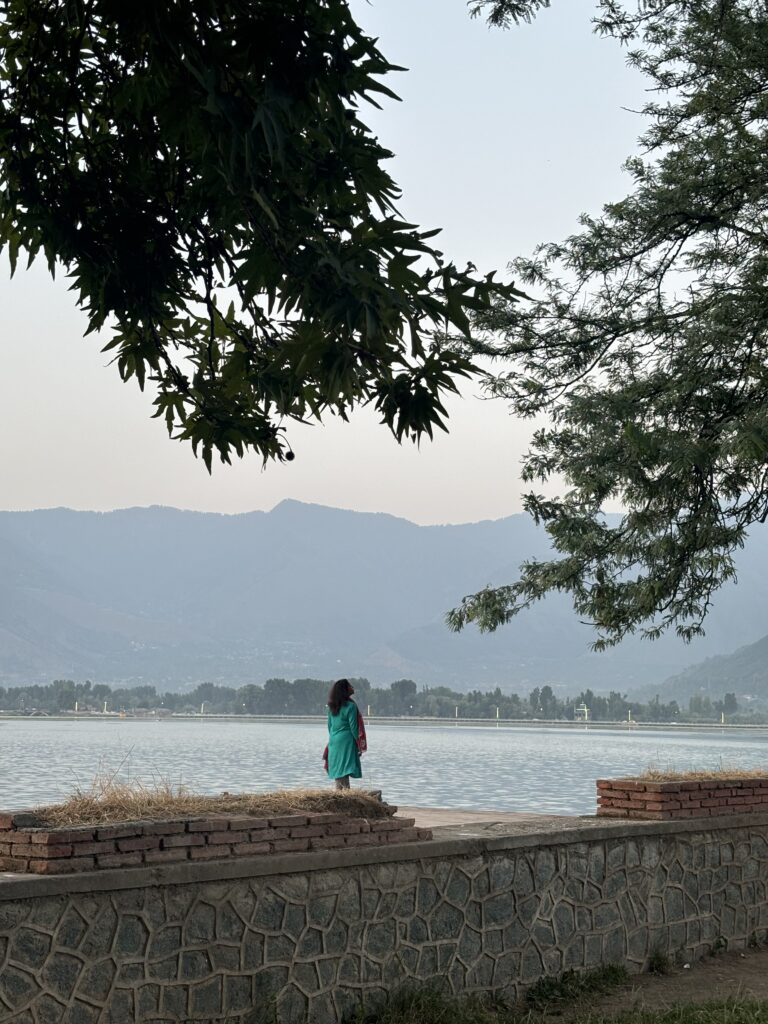
Hari Parbat, also known as Koh-i-Maran, is a hill station in Srinagar. The fort is currently being used by Central Reserve Police Force (CRPF). Through the way there were a lot of Police & Military Personals. This place houses several Hindu temple, mosques, and a gurdwara, making it a must-visit for anyone exploring the city’s rich cultural tapestry. It offers spectacular views of Srinagar town, the Dal lake, Badam Wari. The sheer breathtaking view from the top makes it worthwhile to visit. It sure is a mini hire and the time that I visited, I didn’t meet any other soul through the entire trek up and down except for the CRPF folks.
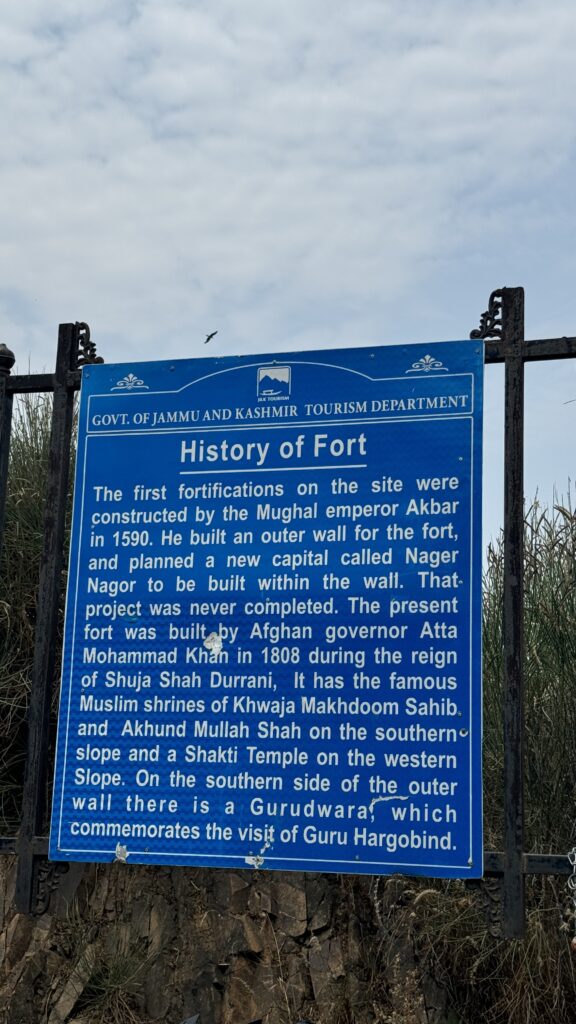
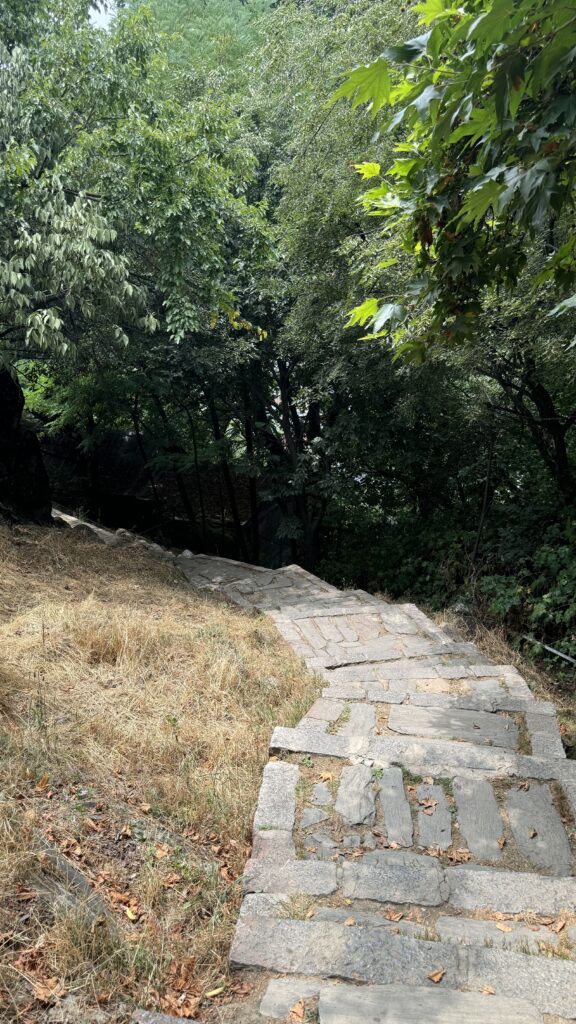

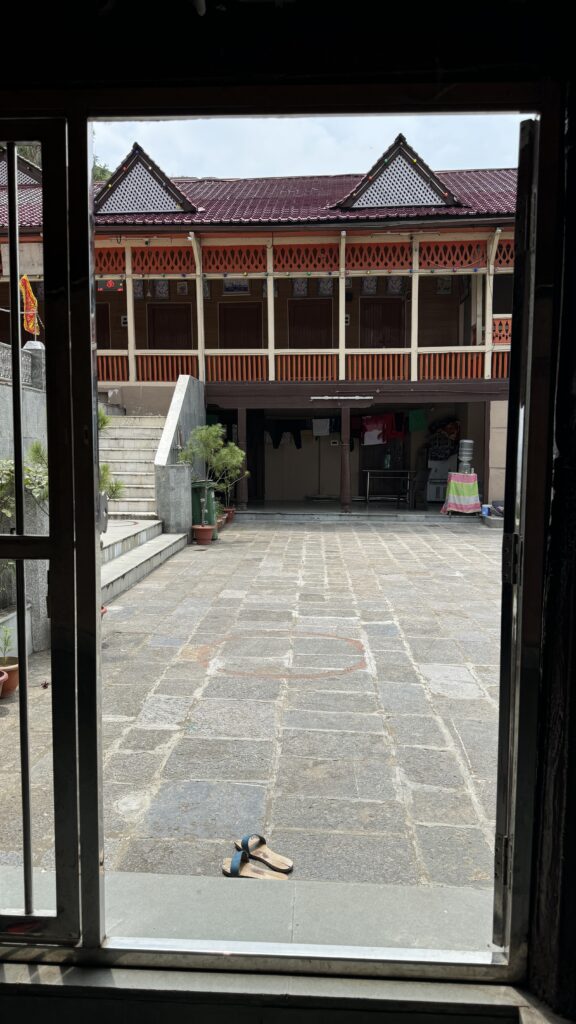
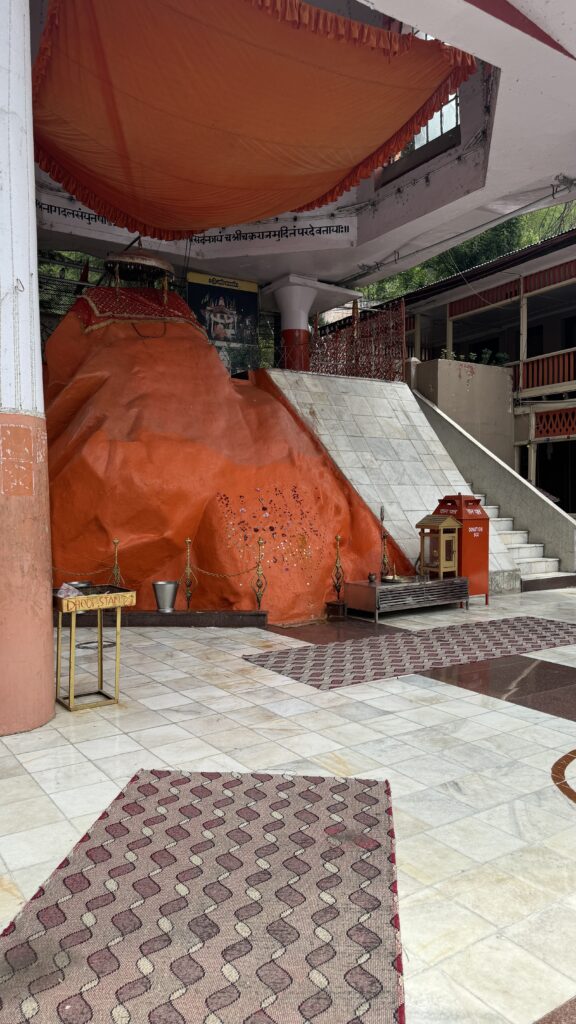
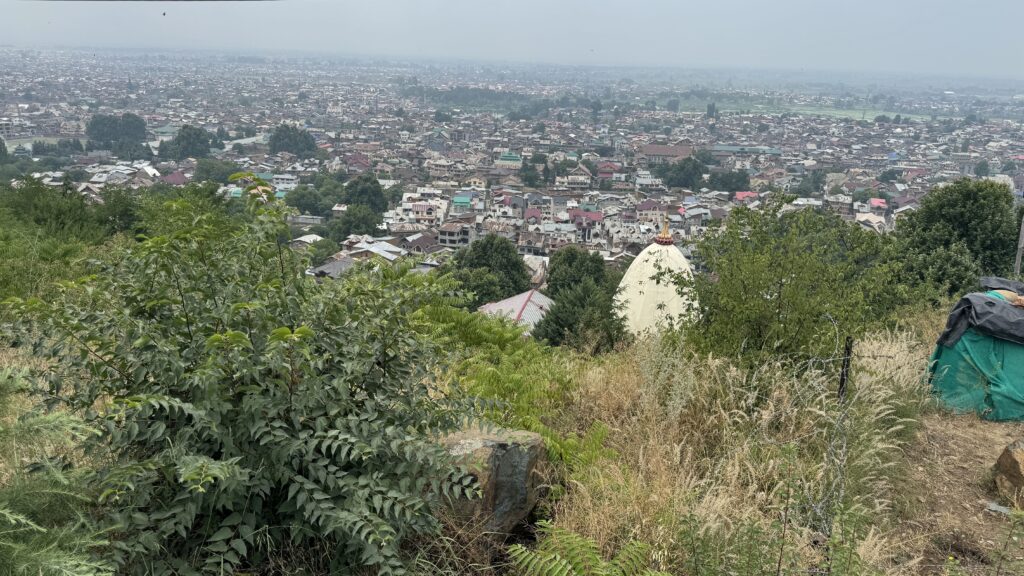
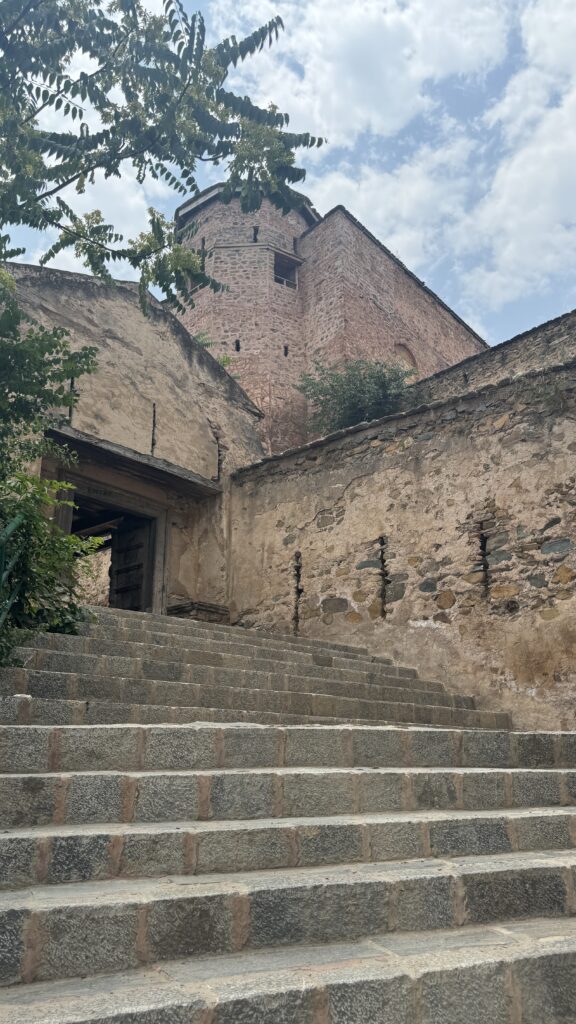
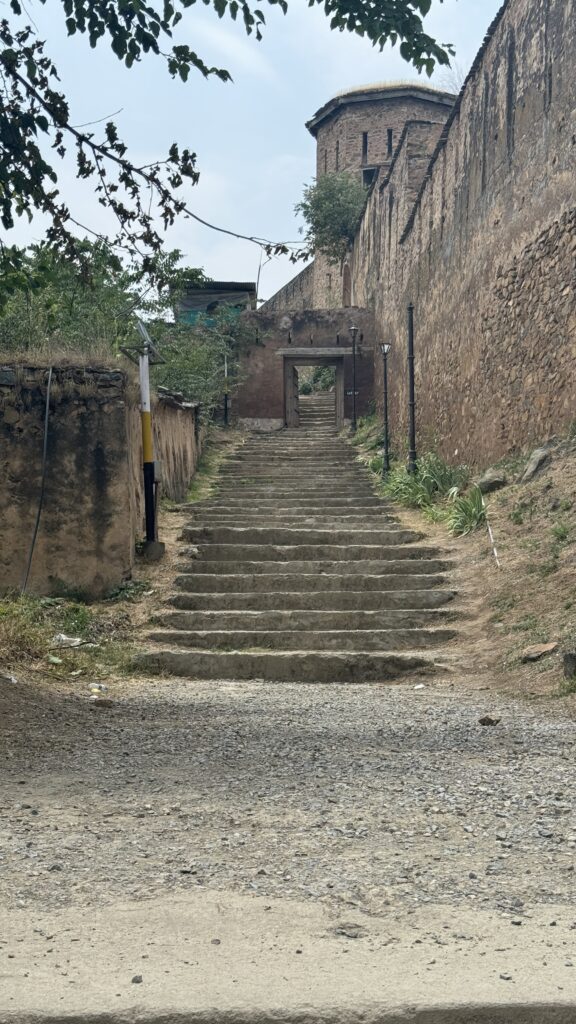
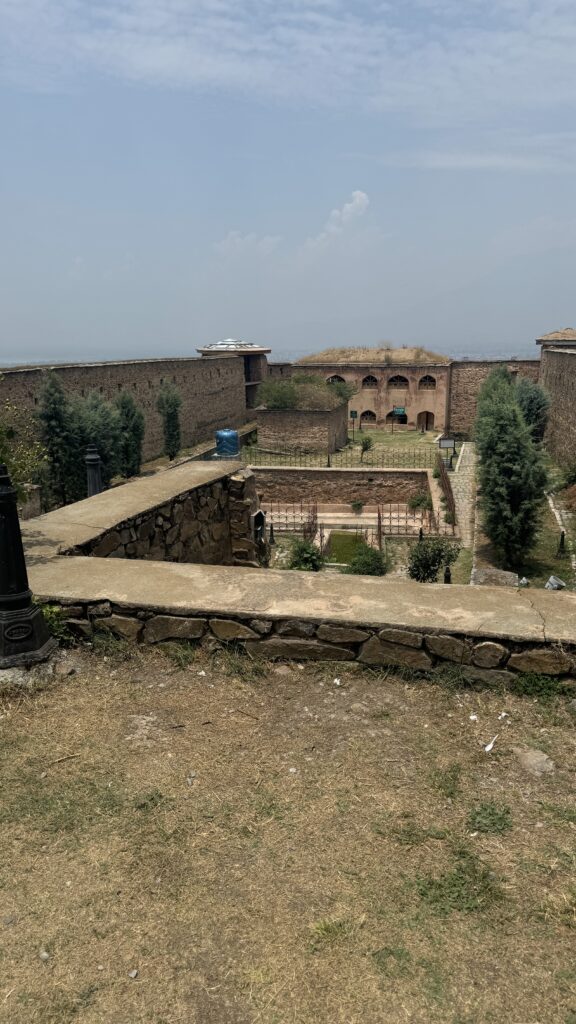
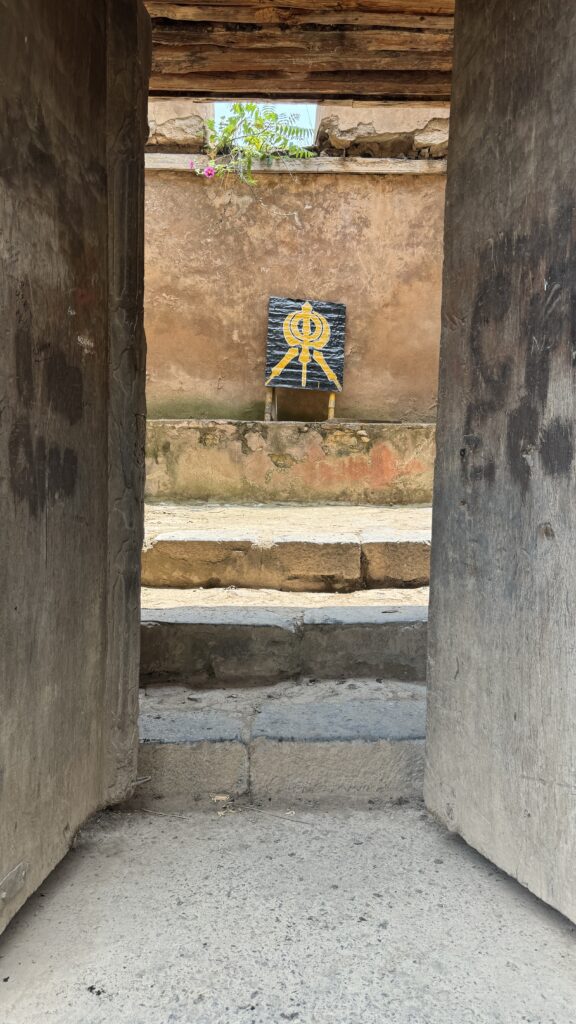
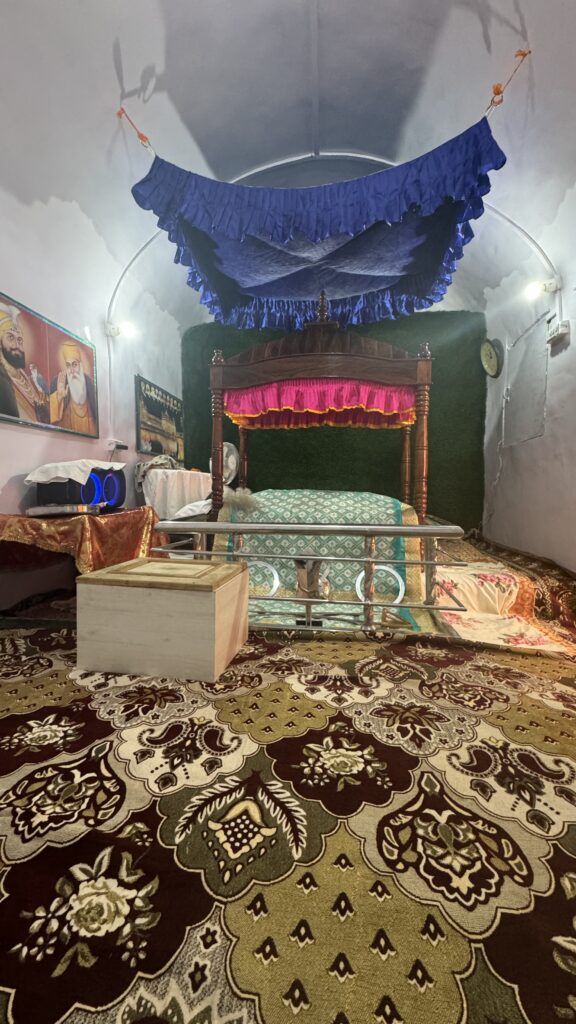
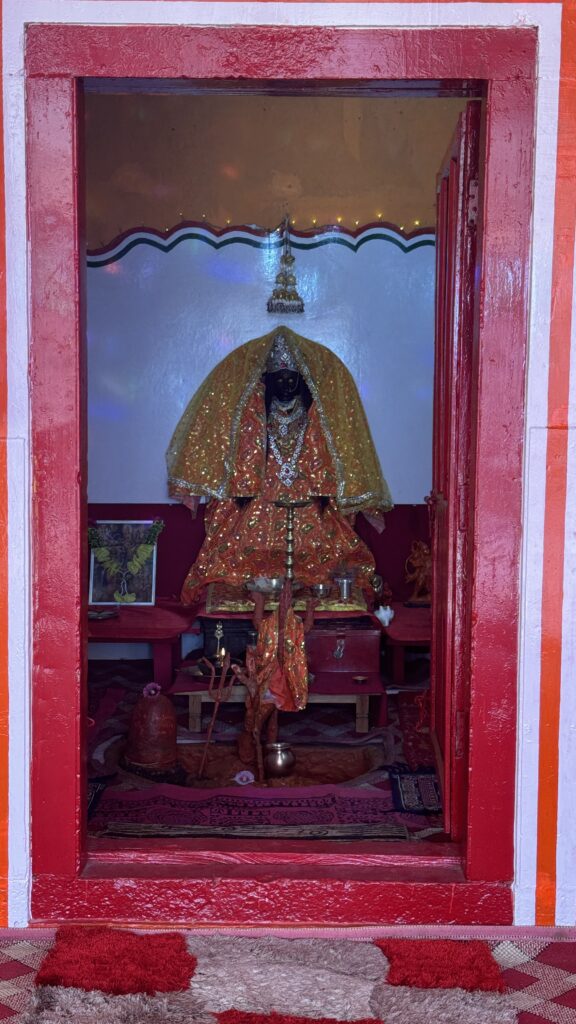
This is Hari Parbat from another angle. While we were going to the next location and while looking at Hari Parbat for one lasttime, I noticed another structure that looked as beautiful as it can! When I asked my auto person about it, he said it was Ziyarat Hazrat Makhdoom Sahib. My immediate response was that I wanted to go there even though it was not a tourist place! On reaching there I learnt that Hamza Makhdoom, also known as Makhdoom Sahib, was a revered Sufi mystic from Kashmir, often called Mehboob-ul-Alam and Sultan-ul-Arifeen. Born Muhammad Hamza Raina in Tujjar near Sopore, he studied various Islamic disciplines before becoming a prominent spiritual figure. He passed away at 82 in Srinagar, where a shrine was built in his honour by King Akbar and later reconstructed by Atta Mohammad Khan. The place has a different feel of it’s own and a divine energy that was evident.
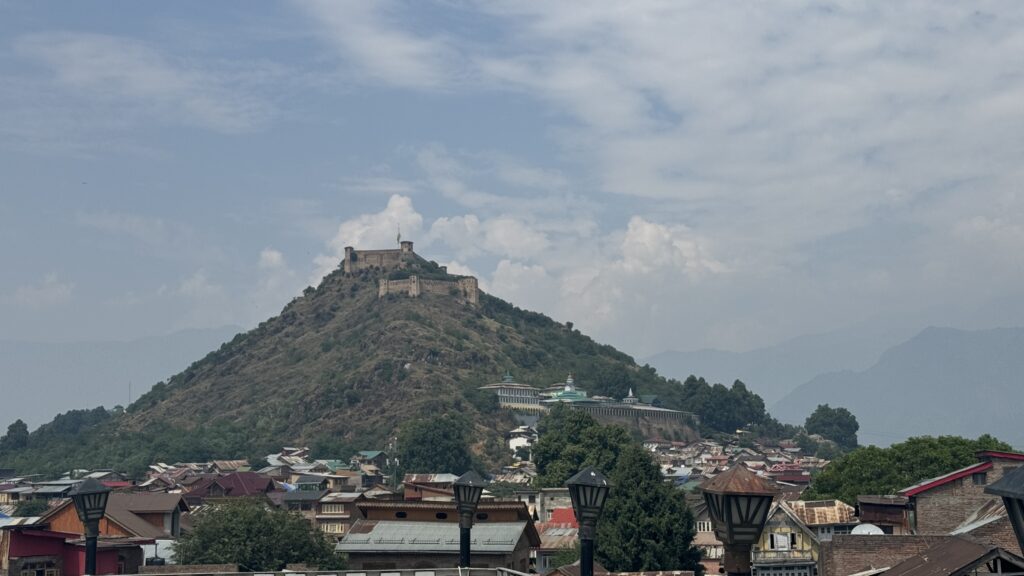
On my way back I ended up in Gurudwara Chati Patshahi. This is a significant Sikh pilgrimage site located in Rainawari near the Kathi Darwaja of Hari Parbat Fort. Named after the sixth Sikh Guru, Guru Gobind Singh, it marks the site where both Guru Nanak Ji and Guru Gobind Singh Ji visited.
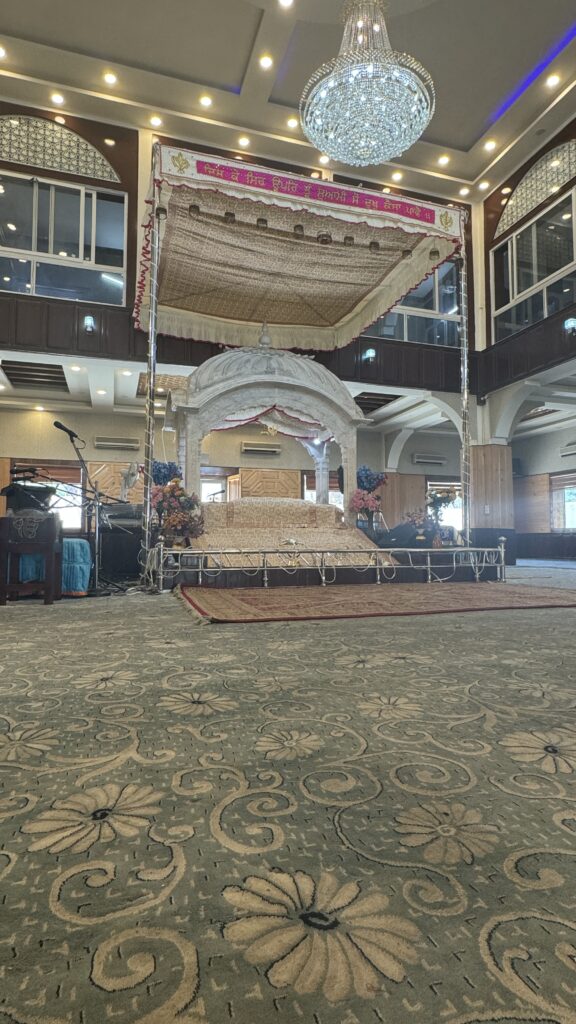
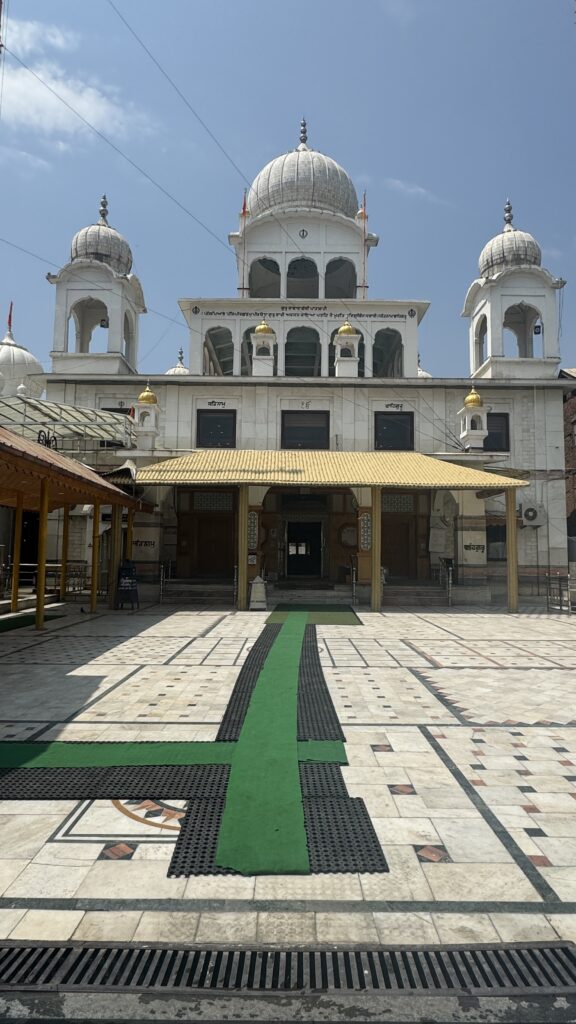
Next stop was at Jamia Masjid. It is the main mosque built in the 14th century by Sikander Butshikan. Architecturally unique, this monument has spires instead of domes and minarets. This Indo-Saracen architecture is designed with 370 wooden pillars and a splendid courtyard and it is said that one of those pillars is straight from the “Jannat” (heaven)! To get a better view of the Masjid, I happen to go to the 5th floor of a building just on the opposite side. The drone view of the Masjid and the entire old city was breathtaking.
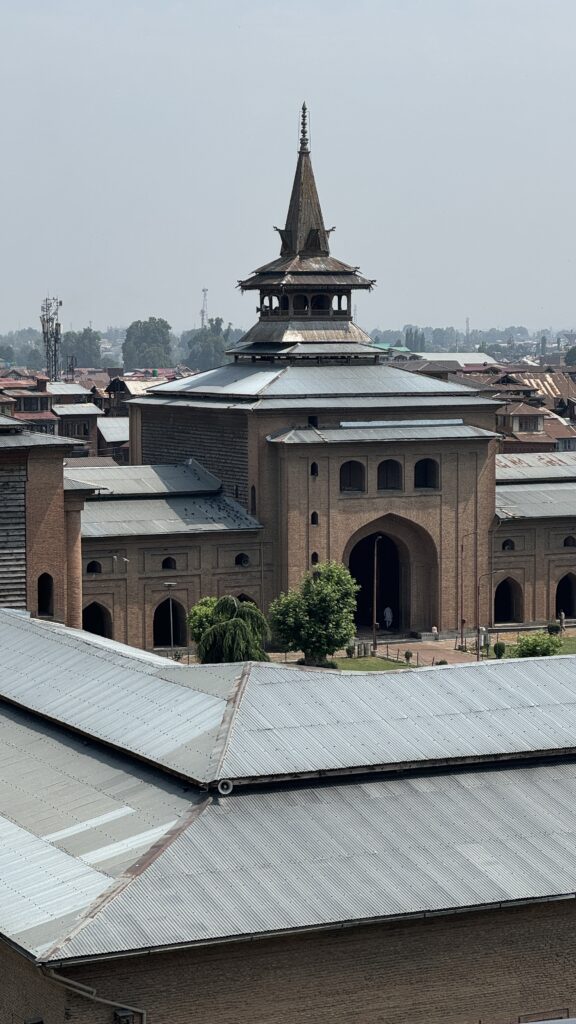
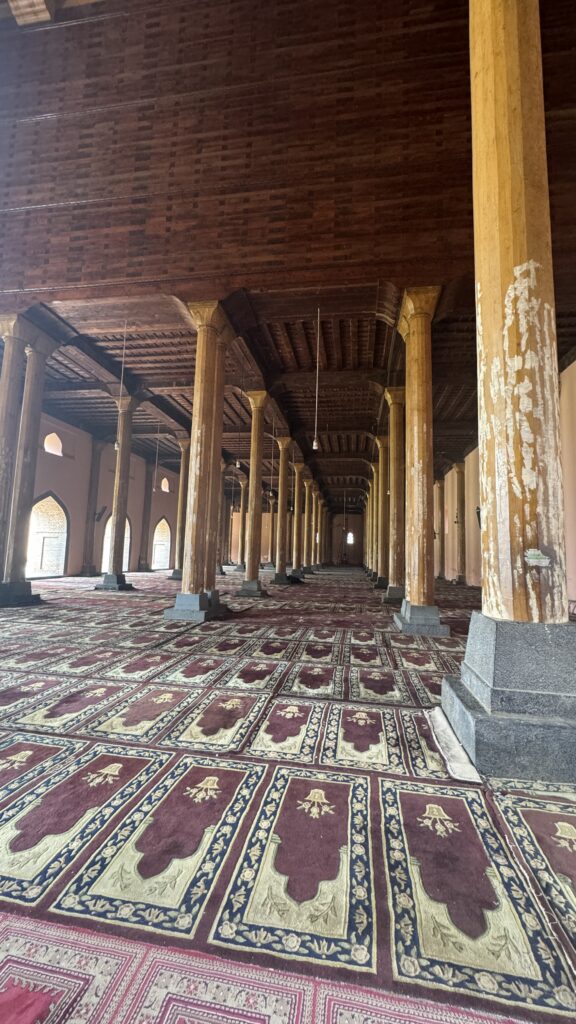
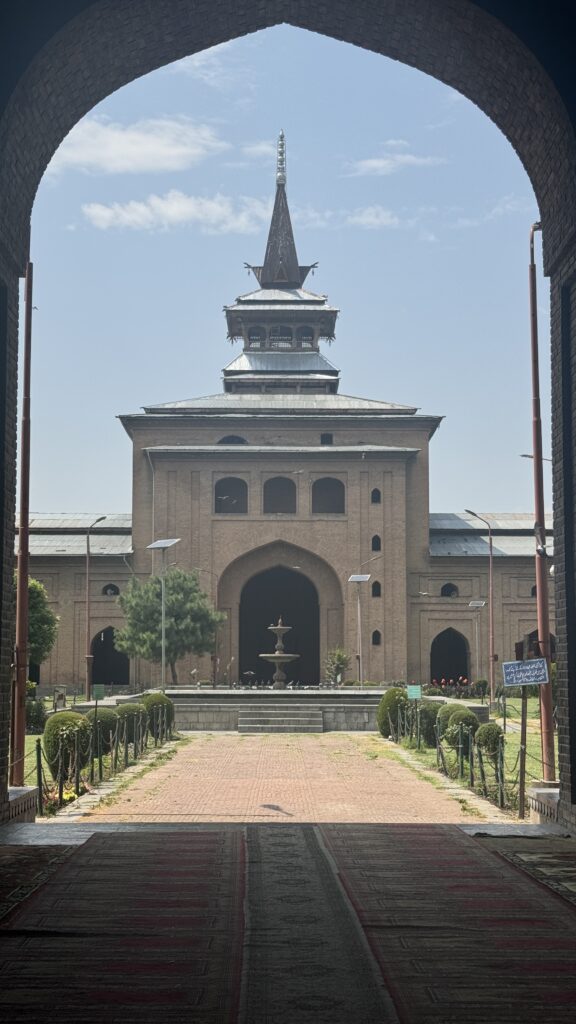
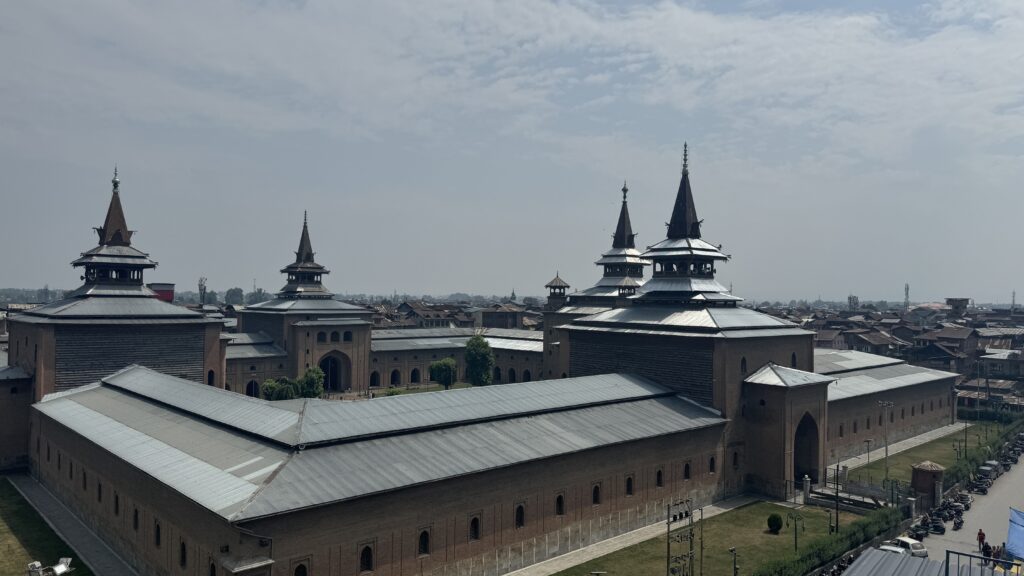
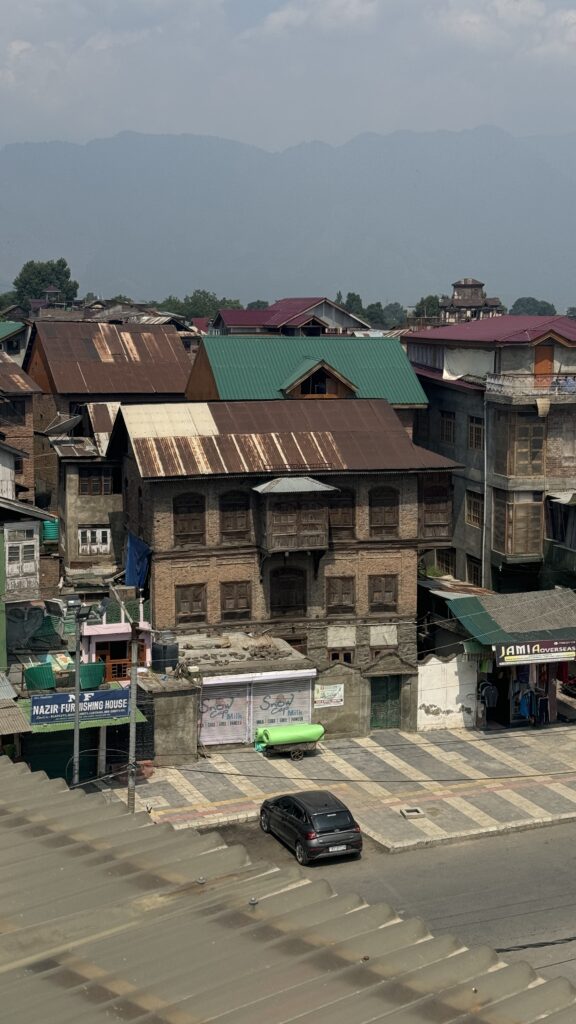
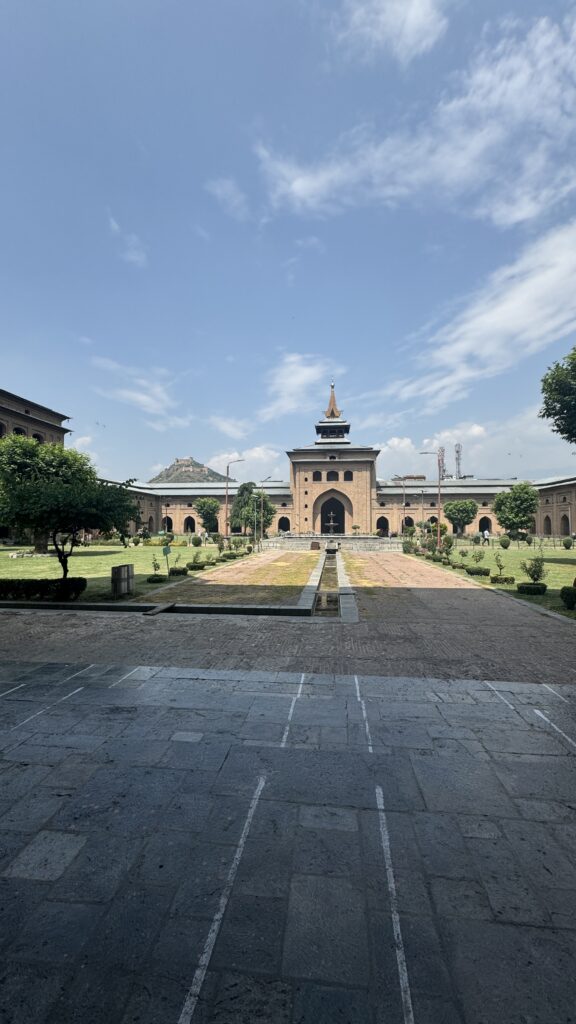
I also visited some more touristy places during my trip too!
Shankaracharya Temple, also known as Jyoteshwar Temple, sits atop Gopadri Hill, 1000 feet above Srinagar. It’s dedicated to Lord Shiva, with a Shivalinga in the main hall, making it a big pilgrimage spot for Kashmiri Hindus. The temple’s history is fascinating – it’s thought to have been built by Mauryan Prince Jaluka around 200 BC and has been rebuilt many times by different rulers like King Godapatta and King Lalitaditya. The architecture is pretty cool too, showcasing Kashmiri shikhara style with a 20-foot tall octagonal base. There’s also a story that Jesus Christ visited the temple, and Adi Shankaracharya wrote “Saundarya Lahiri” here.
Lal Chowk, also known as Red Square, is a historic and iconic spot in Srinagar. Initially a small area at a crossroads, it got its name from a nearby red building. In 1947, Lal Chowk became a highly disputed area during the partition, leading to conflicts and curfews that hindered its development. However, today, Lal Chowk is a popular destination to explore local heritage and shop! This is one of those places where I bargained tons and got many many stuffs from!
Pari Mahal, or the Angels’ Abode, is a seven-terraced garden. Built by Mughal Prince Dara Shikoh in the mid-1600s, it served as his library and home, and later as an observatory for teaching astrology and astronomy. The walk through this place was nothing less than a royal experience.
Chashma Shahi, or the Royal Spring, is a charming Mughal garden located in the stunning Zabarwan Range. This garden is a perfect blend of Mughal and Persian design. It has a fresh water spring that runs through terraces with aqueducts, waterfalls, and fountains. The spring water is believed to have healing properties as it flows though a lot of medicinal plants in the forest. People can drink from this spring too and I didn’t expect much of it. The moment I drank the water, there was a cold chill that passed through my spine. The water was COLD and alkaline in taste. I was even told that India’s first Prime Minister, Jawaharlal Nehru used to drink water only from here and that the water was transported for him everyday!
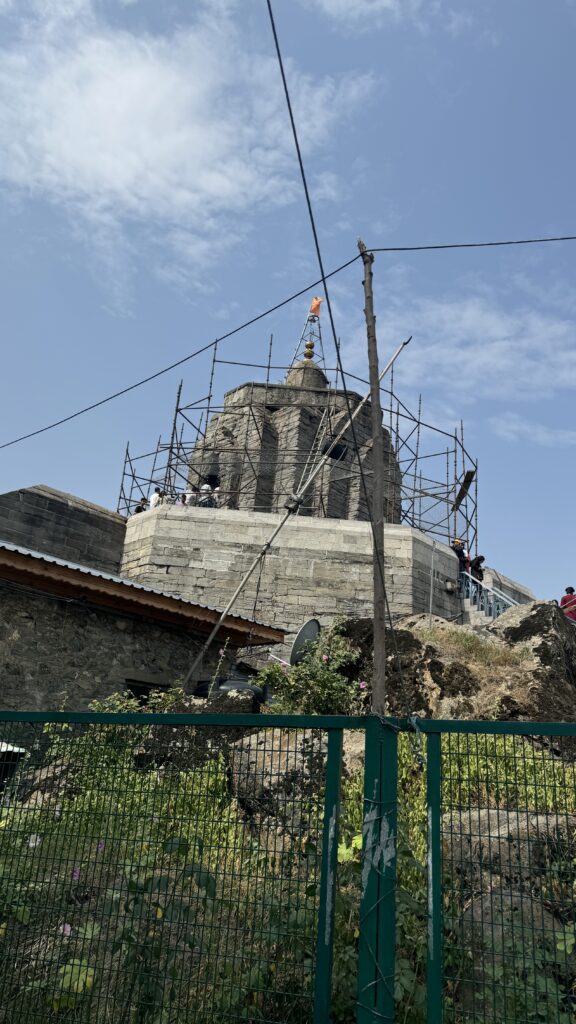
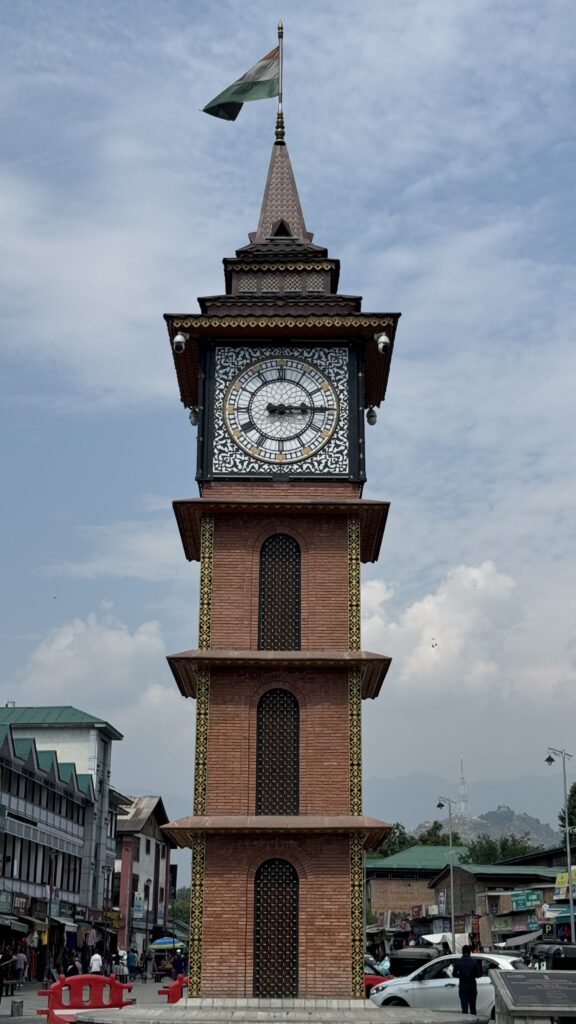
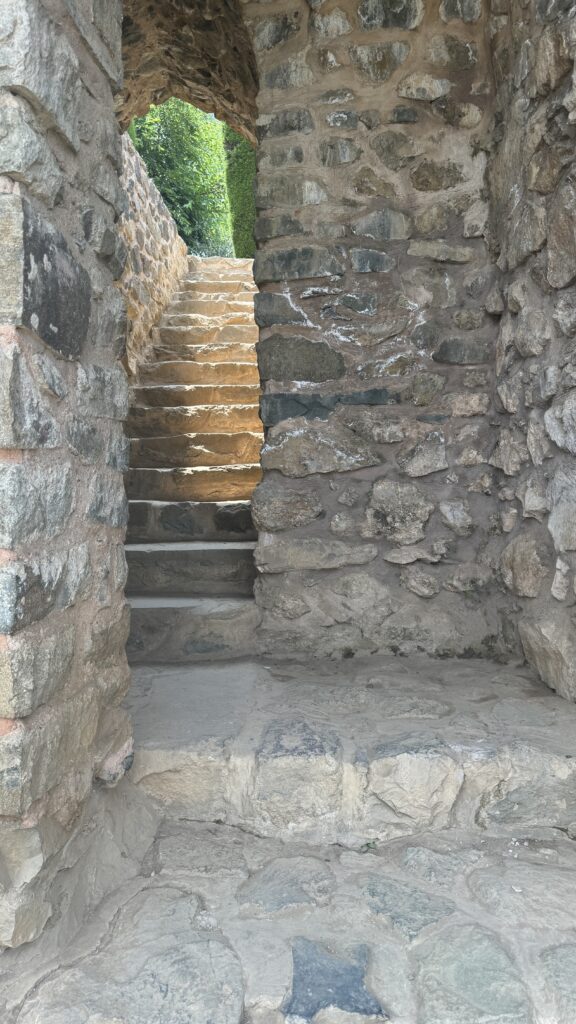
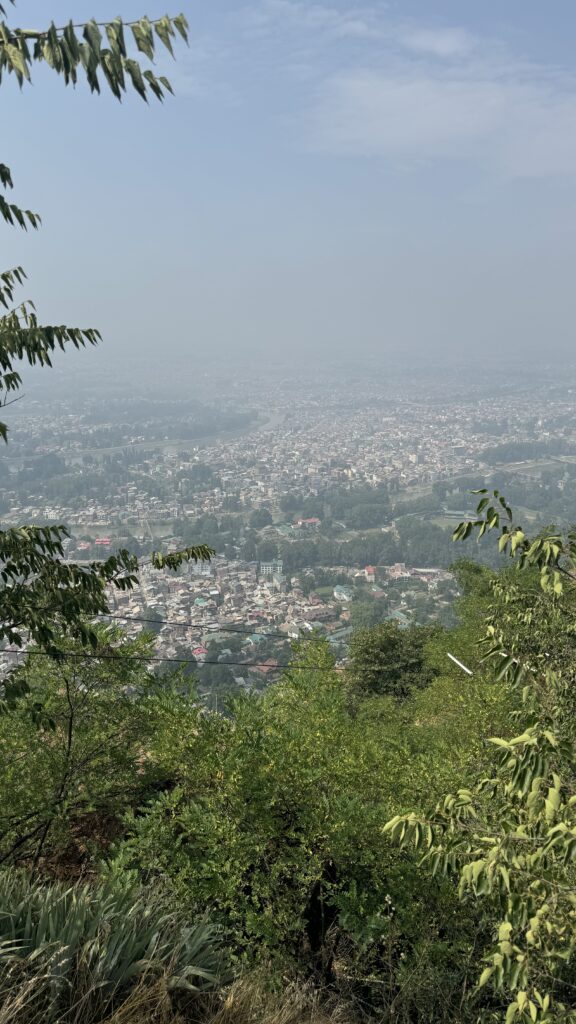
Next talking about the places that I stayed in during the trip, I mostly stayed in the dorms of the Zostel where I met amazing folks.
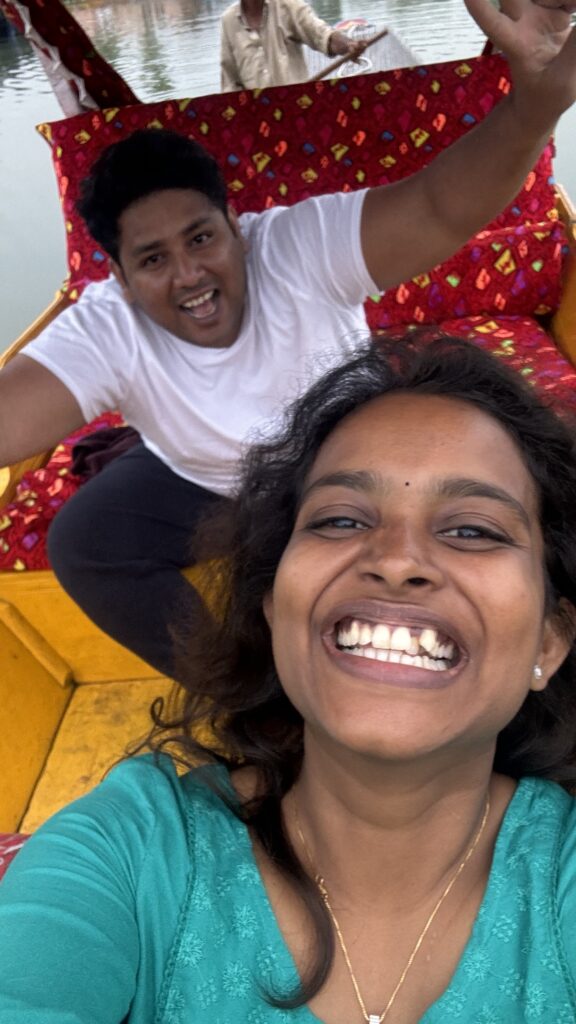
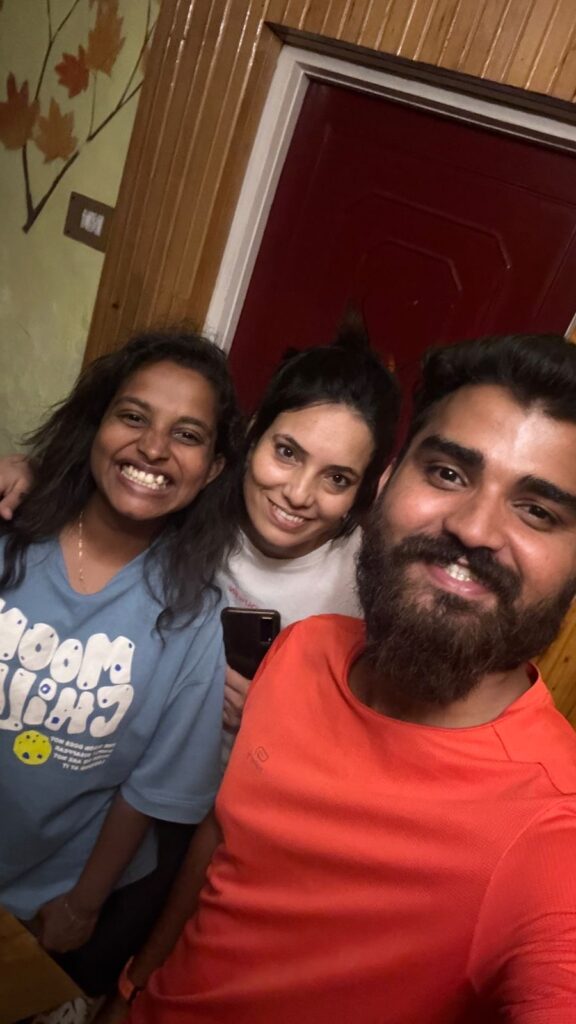
There were two other places that I stayed and wouldn’t trade anything in the world to change that! One of the nights I spent on a Houseboat. Also known as floating houses, they are usually anchored on the shores of Dal Lake and Nigeen Lake, and though they don’t move, they have a charm that draws tourists year after year. Some of these houseboats date back to the early 1900s and are still in use today. Made entirely of wood, they boast intricately carved wooden panels and interiors inspired by Victorian and Turkish architecture. Picture cozy rooms with hand-carved pine walls, traditional Kashmiri rugs to keep your feet warm, and wood-paneled interiors. These houseboats, which resemble luxury floating hotels, offer a variety of services and can have up to three bedrooms, plus a living room and kitchen. There’s always a shared living area for everyone to gather and a dining area where you can enjoy some delicious food. I stayed in a houseboat that had another one attached to it where the family of the owner stayed. It was such a pretty set up and I tagged along with anyone who left on the boat to go get a packet of chips or groceries. The view in the evening was something that would never be able to forget. In the morning, a chacha came on the boat and handed me a bunch of fresh flowers too! <3
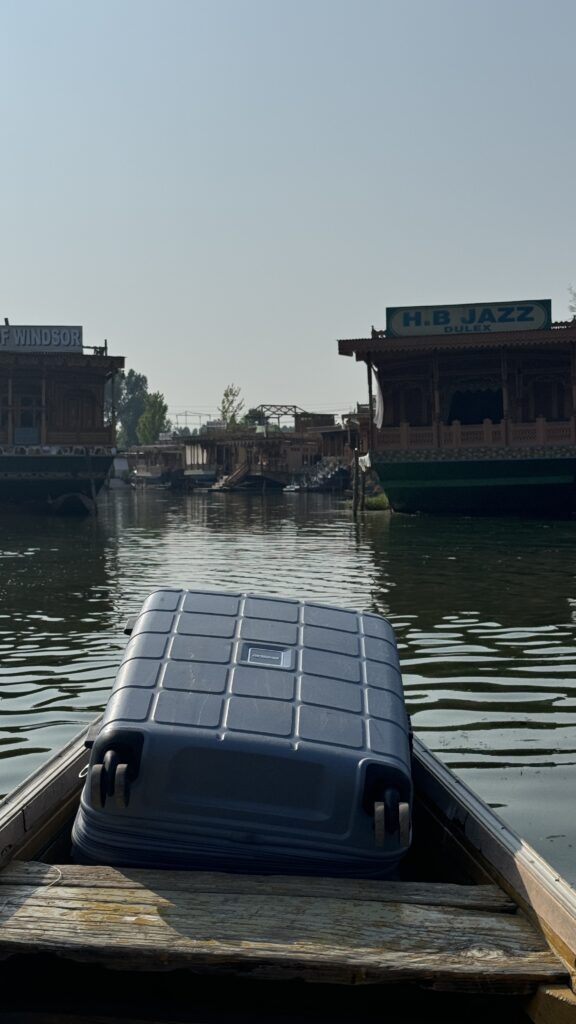
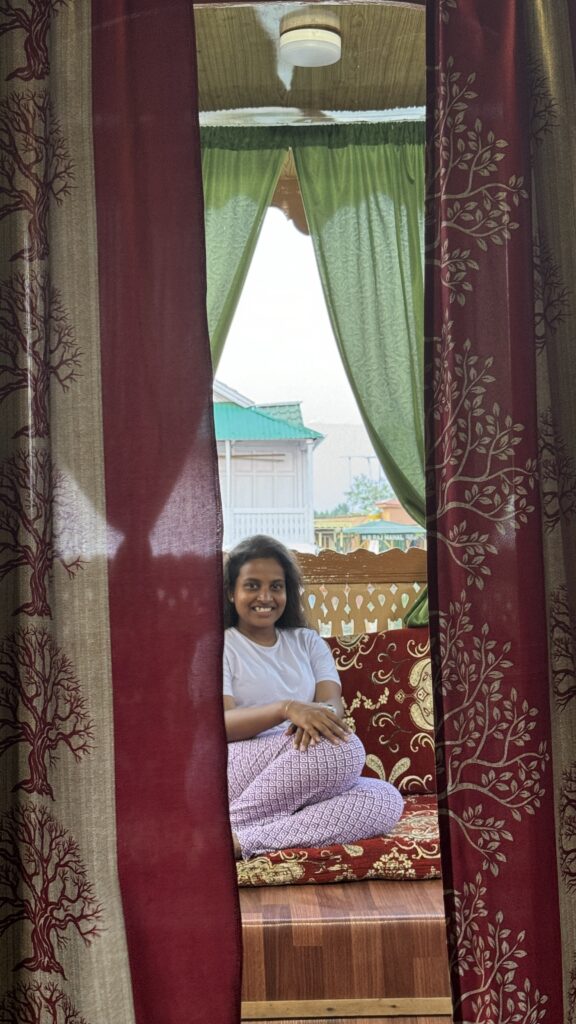
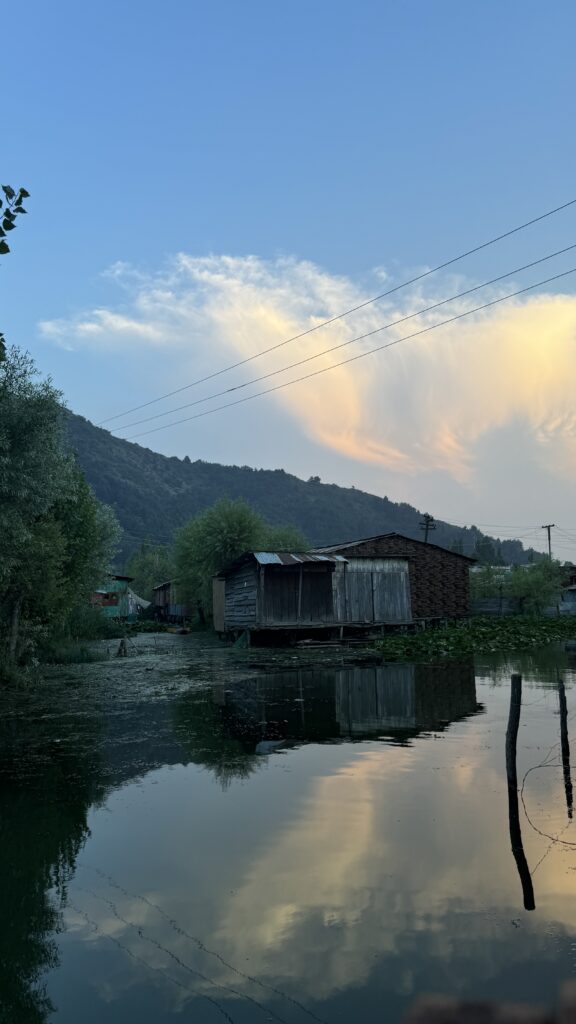
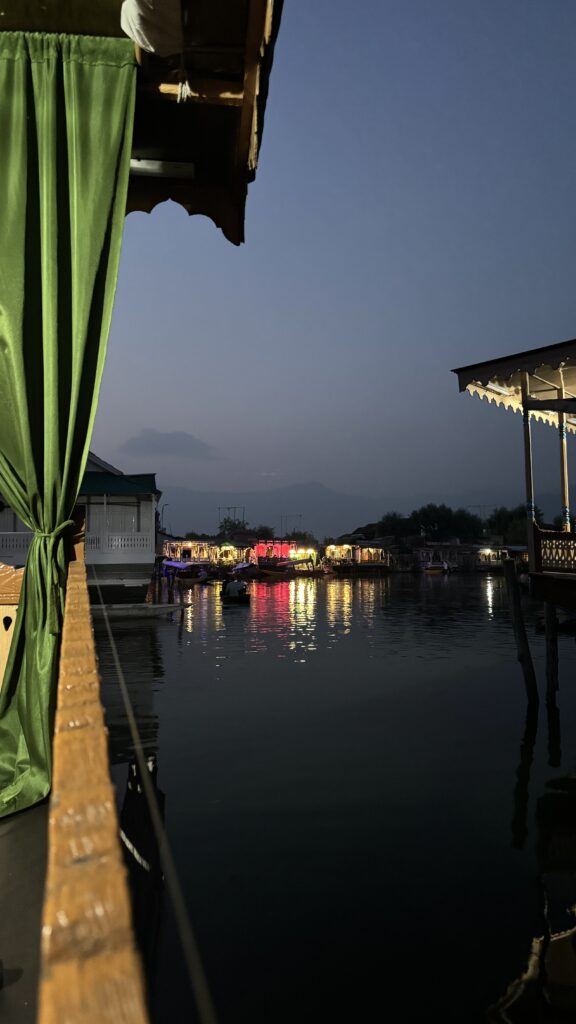
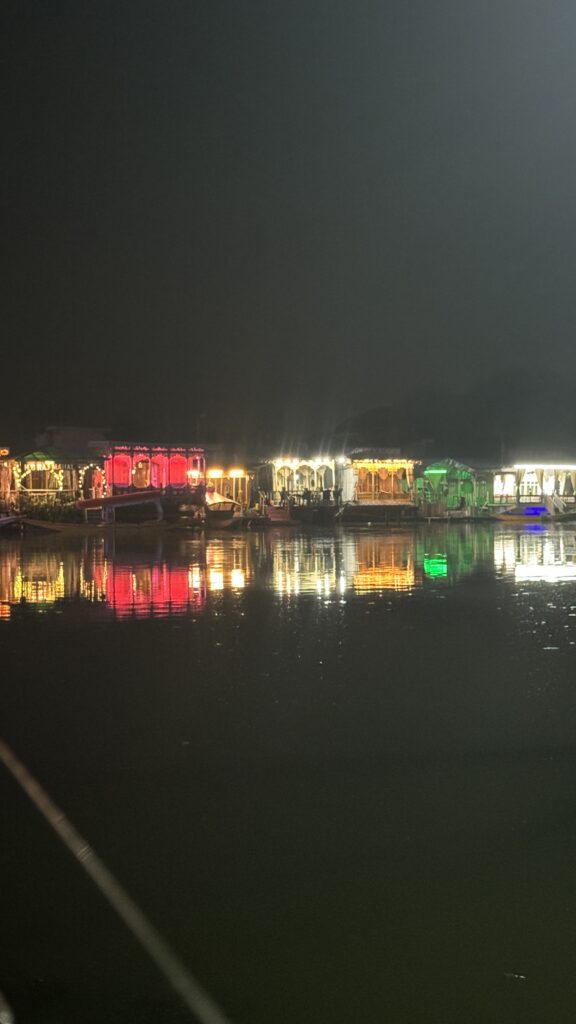
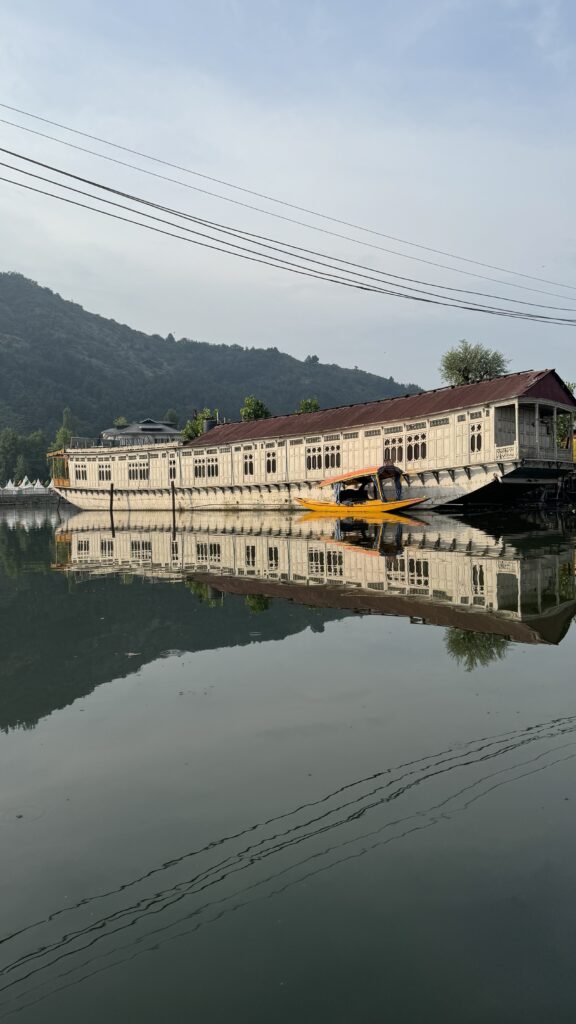
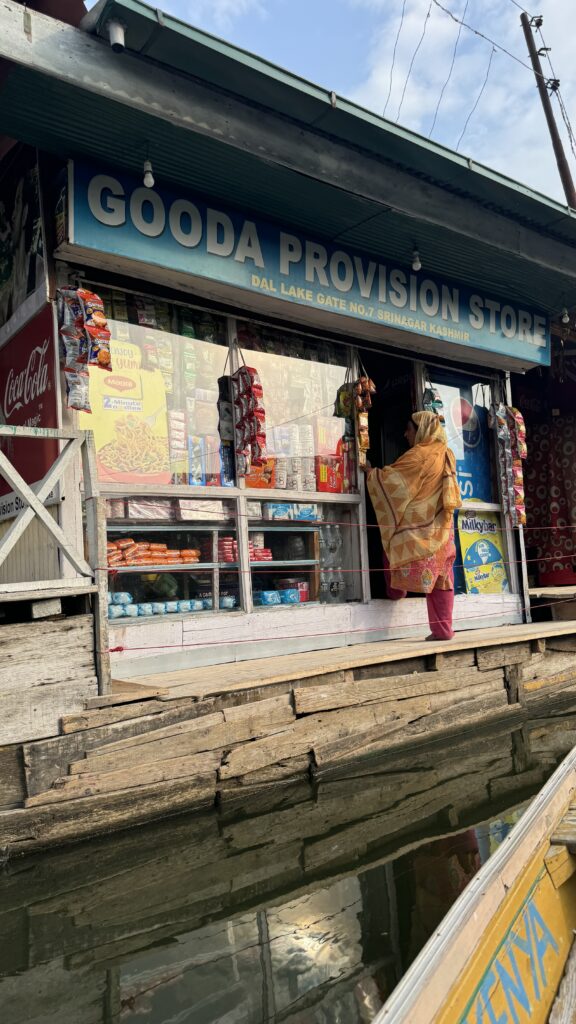
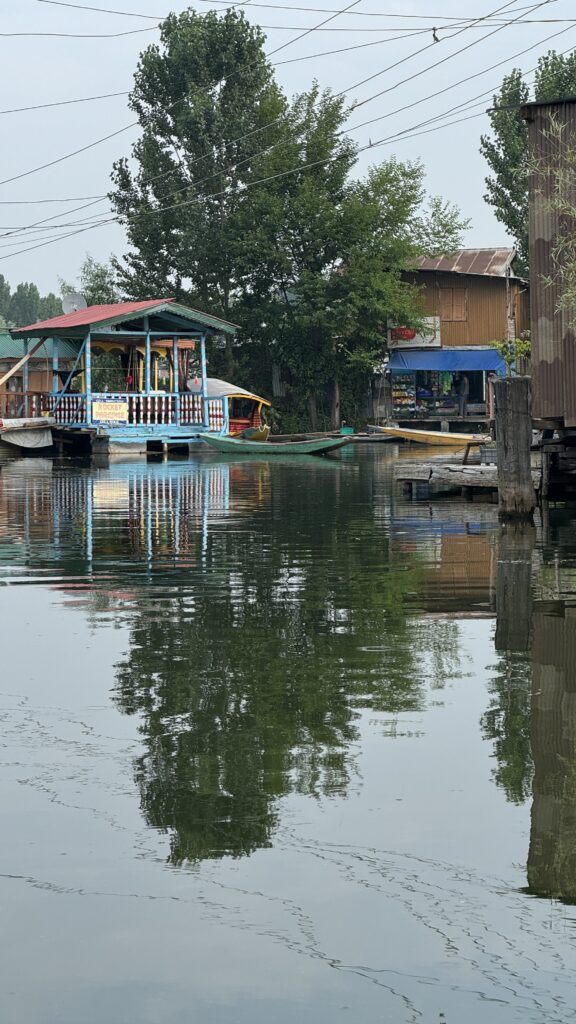
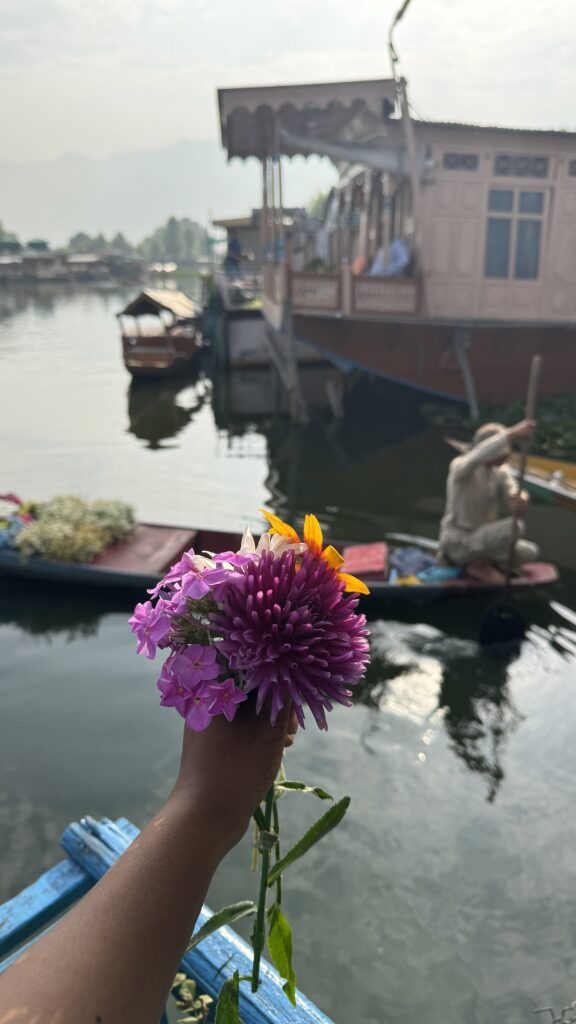
As for their history, there’s an interesting tale. In the late 19th century, the Hanji community started building these floating homes for the British and other residents who couldn’t own land in Kashmir. One popular story is about Pandit Naraindas, who turned a small boat into a houseboat after his shop burned down. This sparked the trend, and soon, houseboats became a hit among European tourists. However, locals say these floating homes have been around since the 13th century, originally used for personal enjoyment on Kashmiri lakes.
The other place was a home that Vasudha had written about. The post was also a reason why I, in teh first place decided on Srinagar. This place was nothing less than a childhood dream come true! A humongous house with a BIG area next to it with cow, calf, sheeps, hens, a dog (Dexter), lots of veggies and fruits and a beautiful 300 year old Chinar tree <3 This place has my full heart and if I go to Srinagar again, this is the only place I would stay in and also for a longer duration! Insha, Mossum, Sara and the entire family made me feel like I was a part of the family since forever and I have also had the best sleep of my life here. In the 24 hours I was here, I have spent good 18 hours sleeping 😀 I did harvest a basket full of yummiest plum that they later packed up for me!
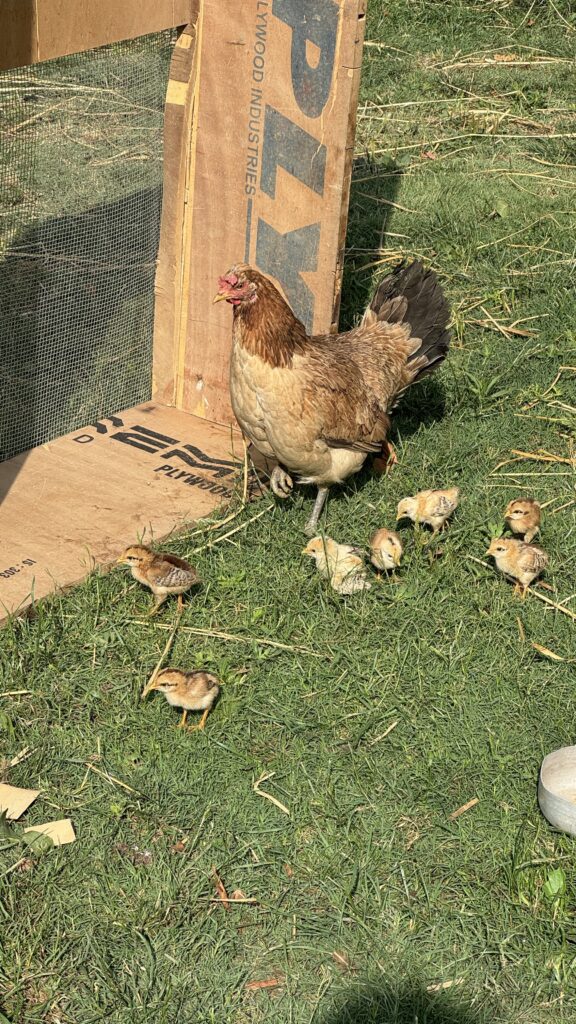
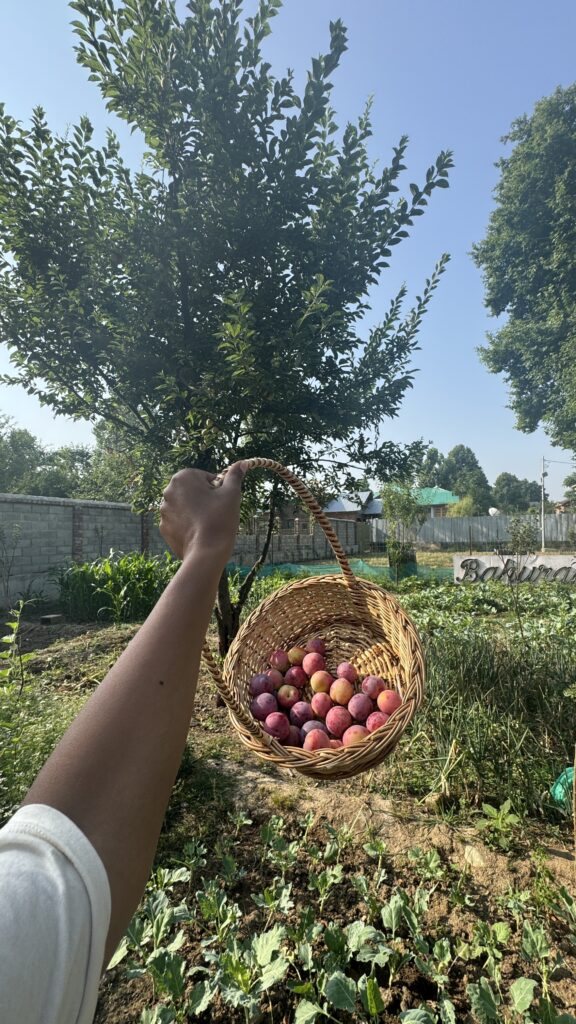
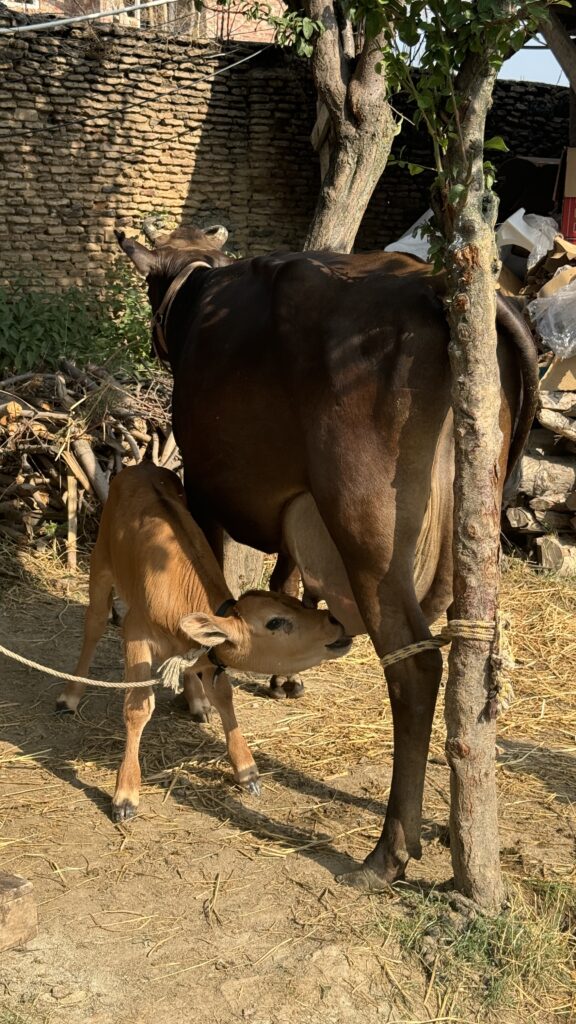
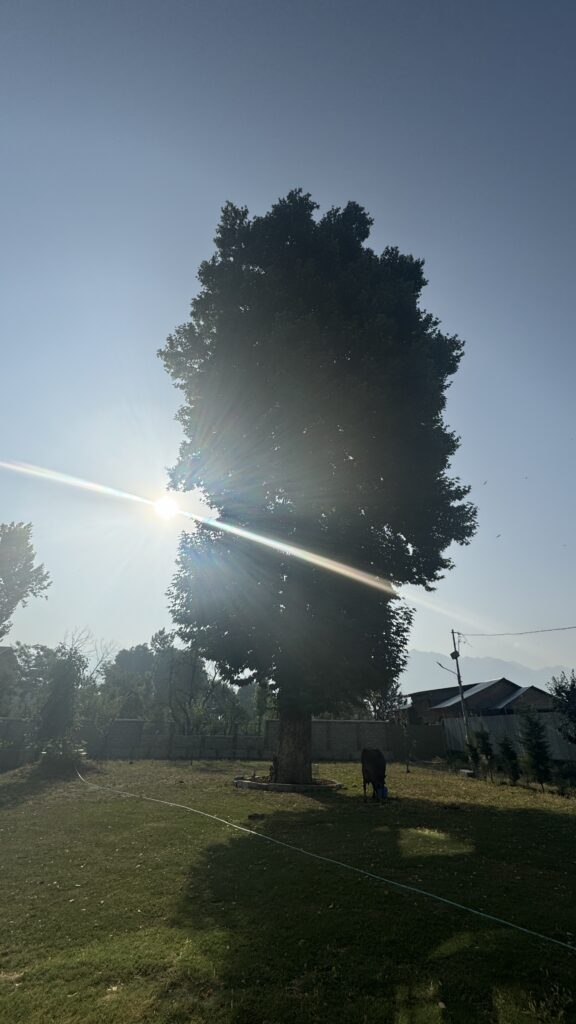
Next! Talking about the unique things I ate! Myyy my ! Where do I even begin 😀 In this trip, I got to try some absolutely delicious local food. Every meal was an adventure, bursting with amazing flavors that I couldn’t get enough of. The variety was fantastic, and you could tell each dish was made with love and fresh ingredients. It was definitely one of the highlights of the trip and made the whole experience even more memorable.
What you see below is Masala Tchot which is basically a soft lavasa which is a naan-like flatbread, stuffed with mushy peas and served hot with a hot radish chutney and curd. Hawkers typically sell it outside schools, colleges, and bus stands in the afternoon. Students and passengers buy it to sate their hunger on the long commute home. It’s cheap, filling, and delicious. Agh, I can give anything to go back in time to enjoy a warm masal’e tchot, fresh from the hawker’s steaming wicker basket!
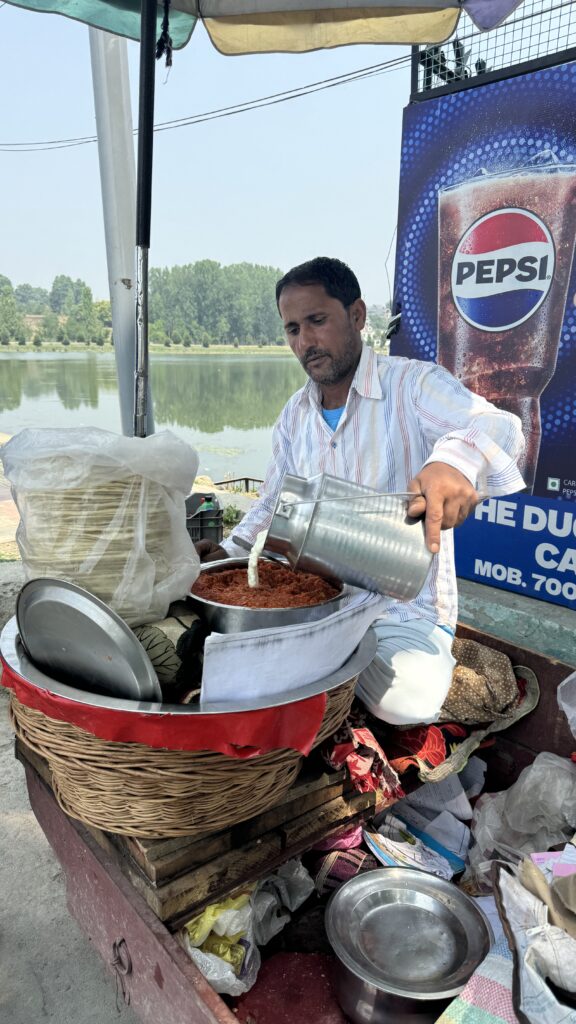
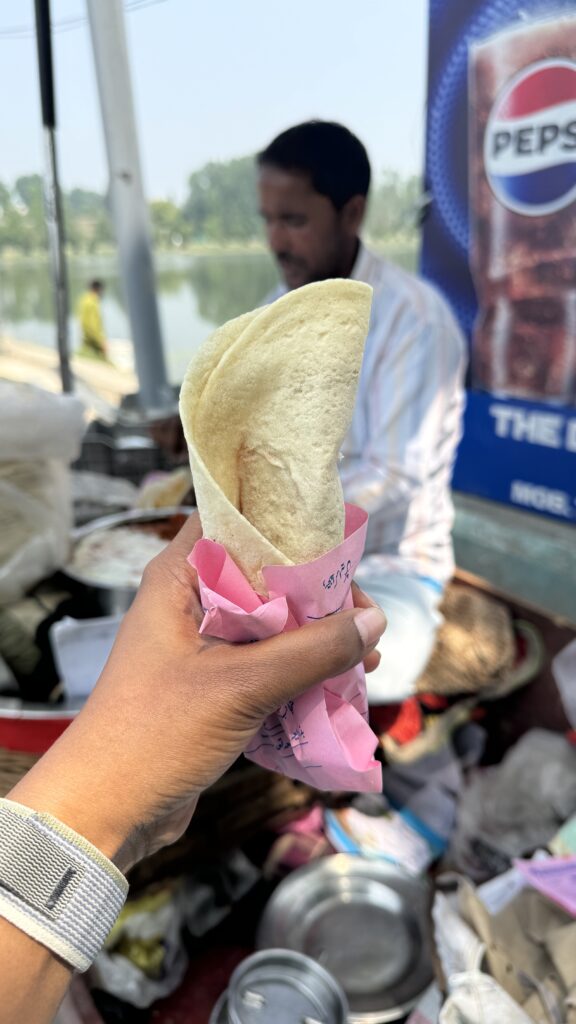
Matka Kulfi, a tasty traditional ice cream from one of the oldest shops in Srinagar. Making of Matka Kulfi involved slowly cooking milk and sugar with cardamom and saffron until it turned thick and creamy. This mixture is poured into clay pots, called matkas, and frozen. This traditional recipe has been passed down through the family, ensuring every bite of Matka Kulfi tastes just as it did decades ago.
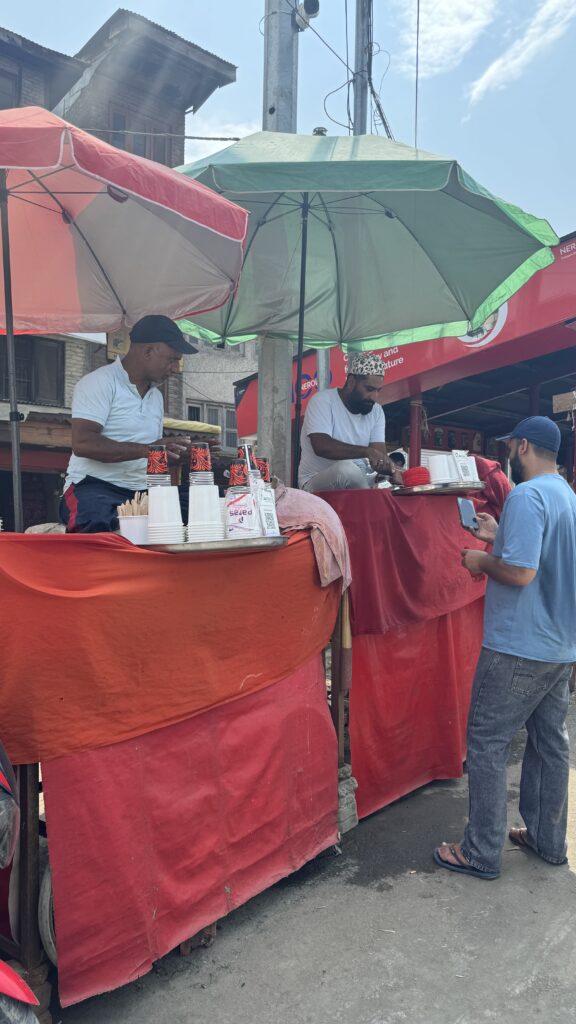
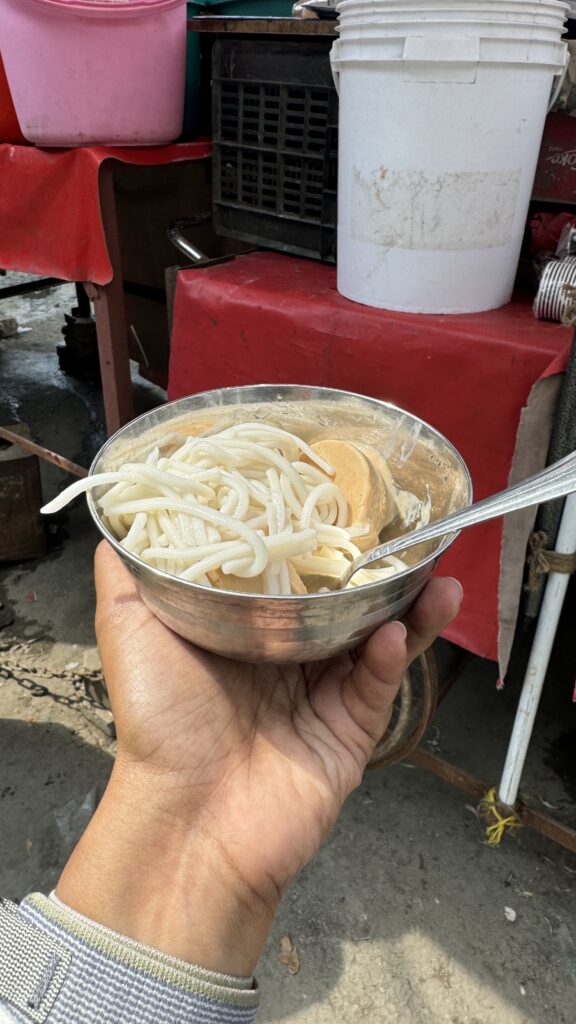
This was my food with a view in the House Boat. The picture on the left is rice, Kashmiri Saag and potato. The food was lip smacking delicious and mind you, I LOVE potatoes but this thaali made me doubt all the other potato dishes I have fallen in love with! It was and is one of the most yummiest things I have eaten. On the right is most Kashmiri’s Breakfast! Salty bread with homemade butter which is dipped in tea just as you eat! Breakfast options like czot are golden, buttery, and chewy, while czochworu, perfect for any time, is fluffy with poppy and sesame seeds. Sweet breads like kulchas come in pistachio and coconut flavors. Traditional ovens bake most breads, firewood tandoors handle czot and baikarkhani, and haath ki roti cooks on gas stoves. Remarkably, local bakeries, or kandurs, maintain their strong presence in the community and localities go into the bakery every morning to buy these for the family.
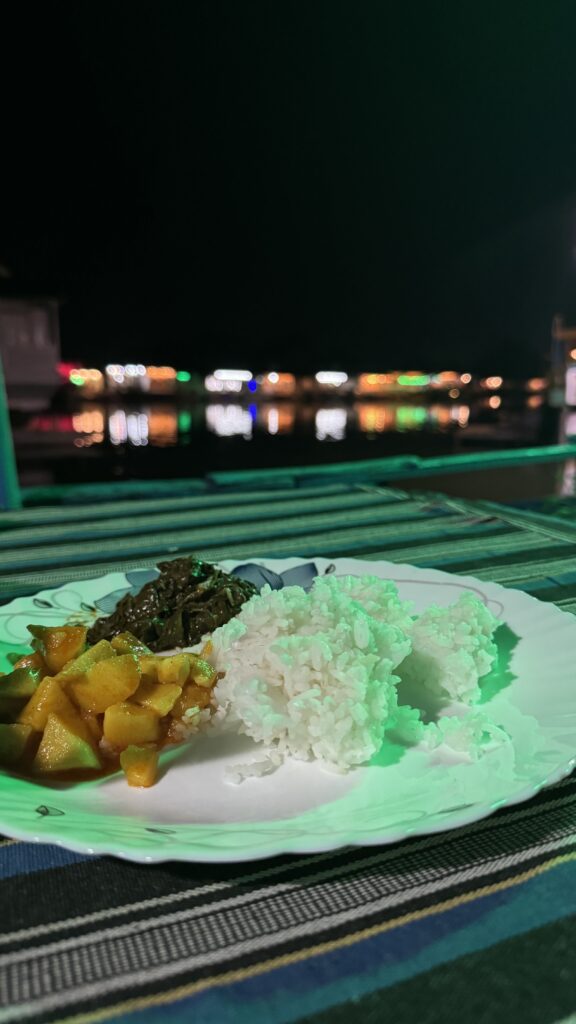
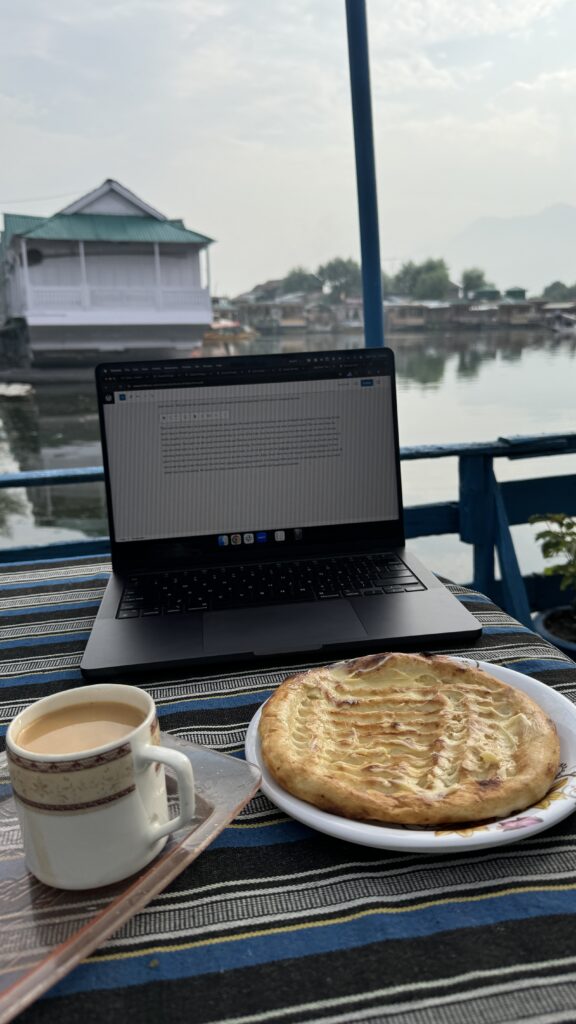
If one happens to be in Srinagar, one thing sure not to miss is the visit to Moonland. With a 119-year-old legacy, is famous for its exclusive Walnut Fudge and Ginger Biscuits. Run by Moonis Mehraj, the bakery uses high-quality ingredients and closely guarded family recipes, prioritising quality and tradition while producing around 100 pieces only. The fudge and biscuits are mostly sold out in no time! The fudge melts in your mouth and at the same time leaves a taste unlike anything else one might have had. Only a person who has tasted it would know what I am talking about!
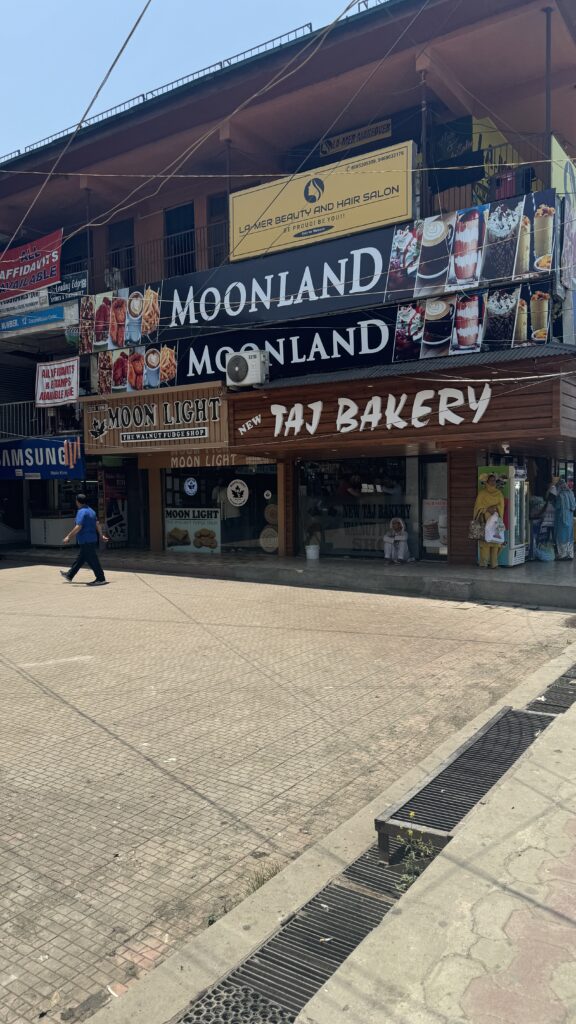
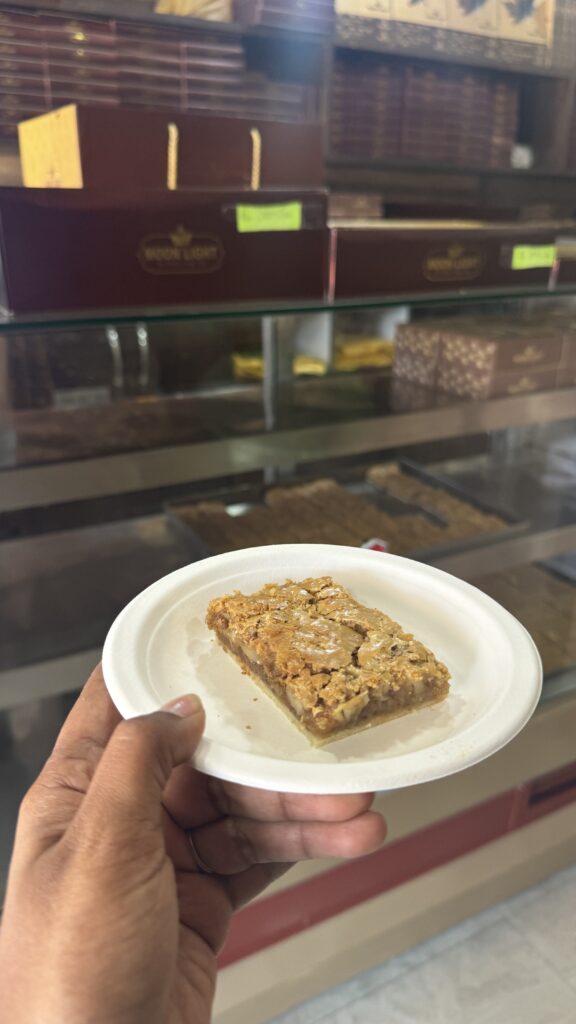
One other delicacy that I had was Lotus stem, locally known as “Nadru” in Kashmir and “Kamal Kakdi”. It grows in shallow parts of water bodies like Dal Lake, Wular Lake, Mansar Lake, and ponds. The lotus stem although an expensive delicacy is much loved and is used in many Kashmiri dishes. I had the curry with Tava Phulka. The picture on the right is the dinner I had at Insha’s place. I eat little but the taste of every dish in the picture made me finish the entire serving leaving me licking my fingers at the end.
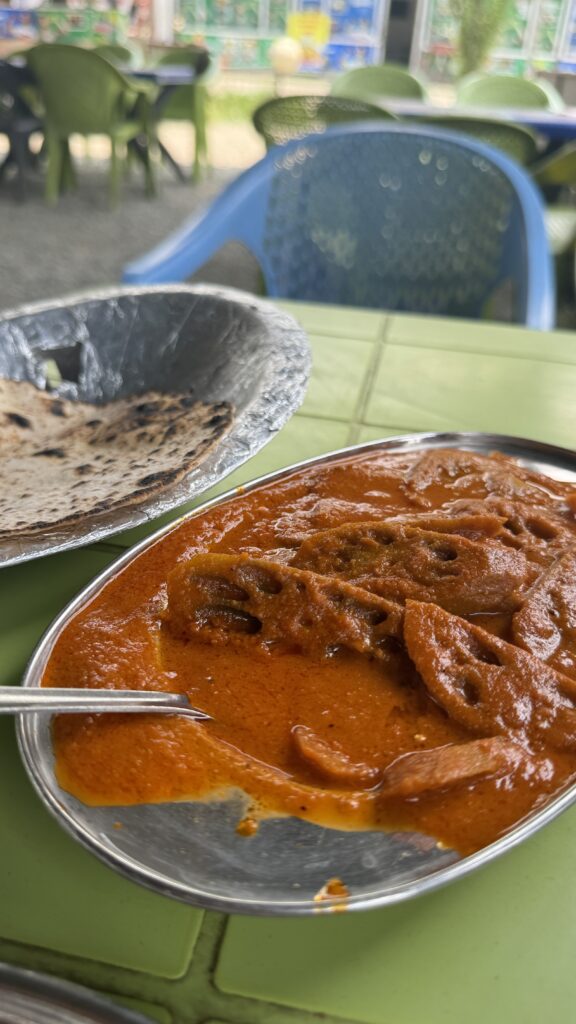
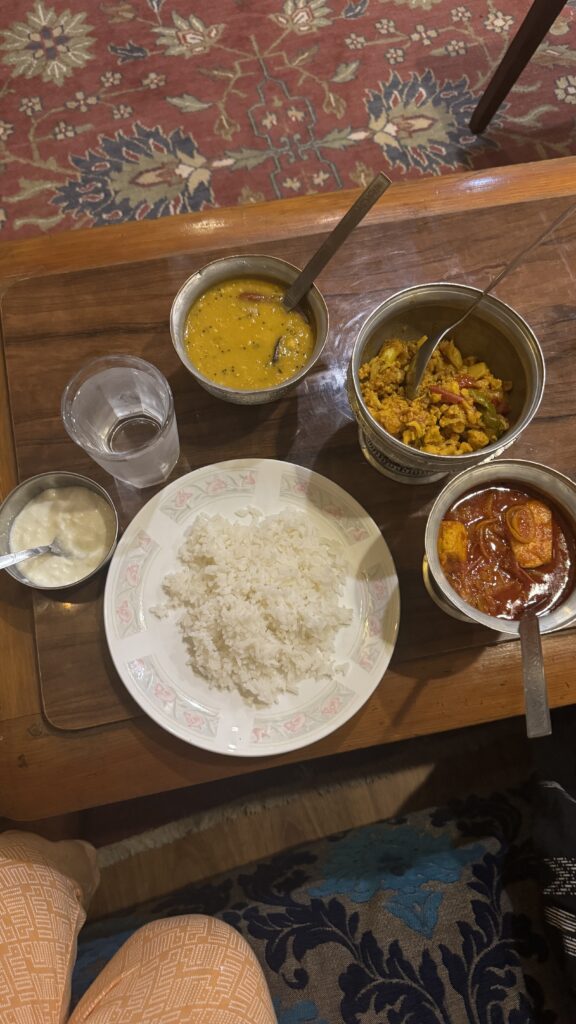
One of the biggest highlight of my trip would be the visit to Torry bhaiyya’s home! A fellow hosteller shared an Auto guy’s number with me. The next thing I know is that I am going to the best of the shopping places, getting the cheapest of the rates on the things I want to buy, going to offbeat places in Srinagar where tourists are not allowed and to top it all, I am at his house, with his mother, sister, niece, nephew and his entire neighbourhood, having the best lunch and one of the warmest+cutest conversation ever.
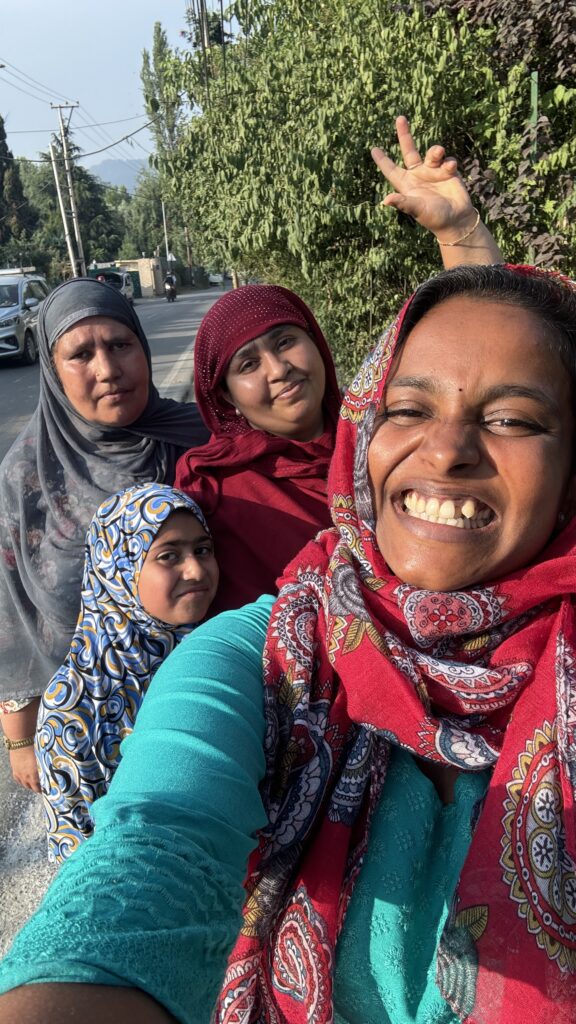
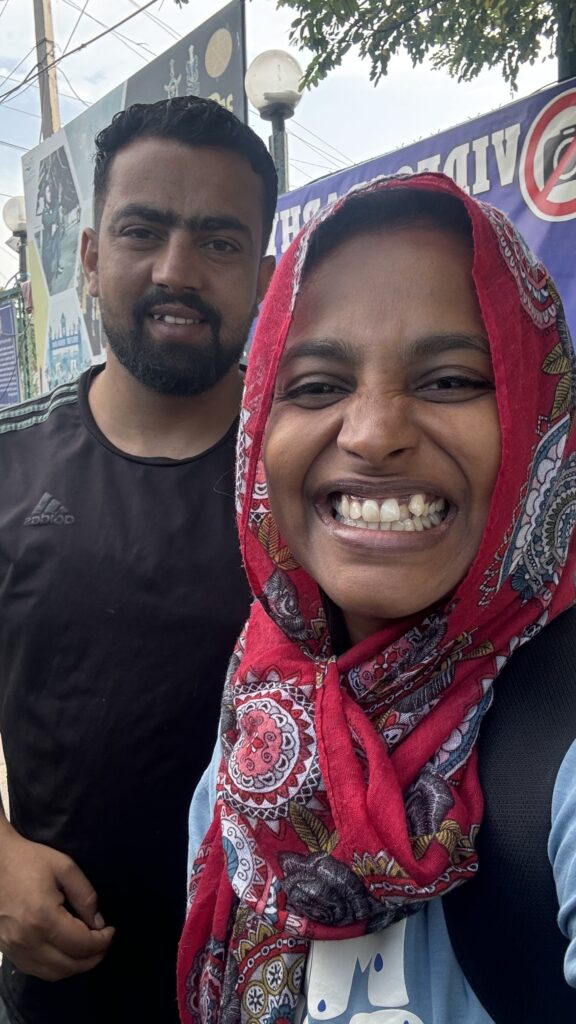
The lunch was served in a royal Kashmiri way on a Dastarkhwan which is the tablecloth that is spread on the ground, but is used more broadly to refer to the entire meal setting. The lunch was very filling and delicious. The next few hours, we spent talking about cultural similarities and differences, showing each other tons of pictures and talking about everything under the sky. In the evening, I had the authentic noon chai. It is is a traditional salted tea taken in morning and afternoon, almost by everyone, every day, irrespective of gender or age. It is made from special tea leaves, milk, salt and sodium bicarbonate. To go along with this Kashmiri speciality, they had variety of cookies, roti and breads.
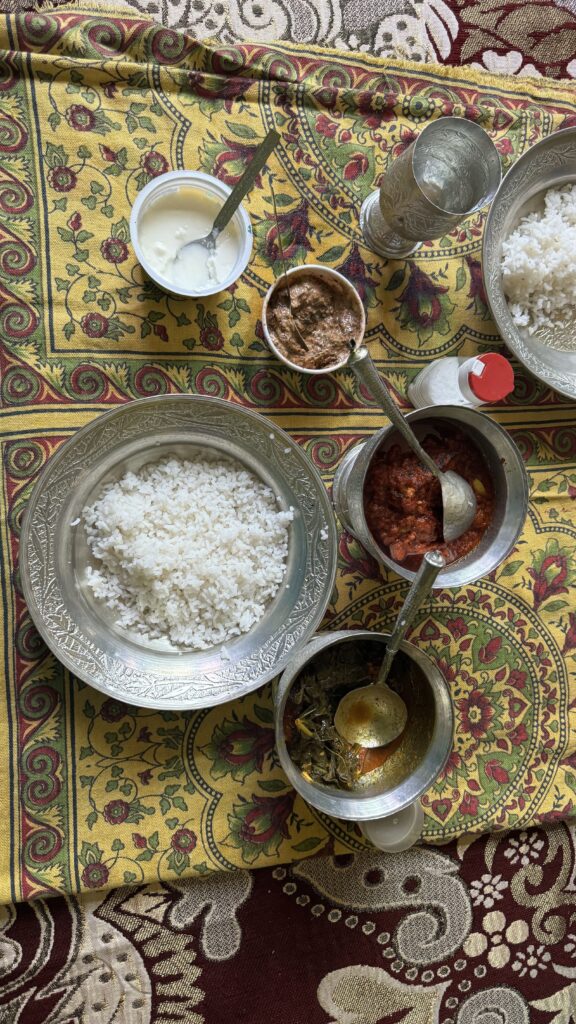
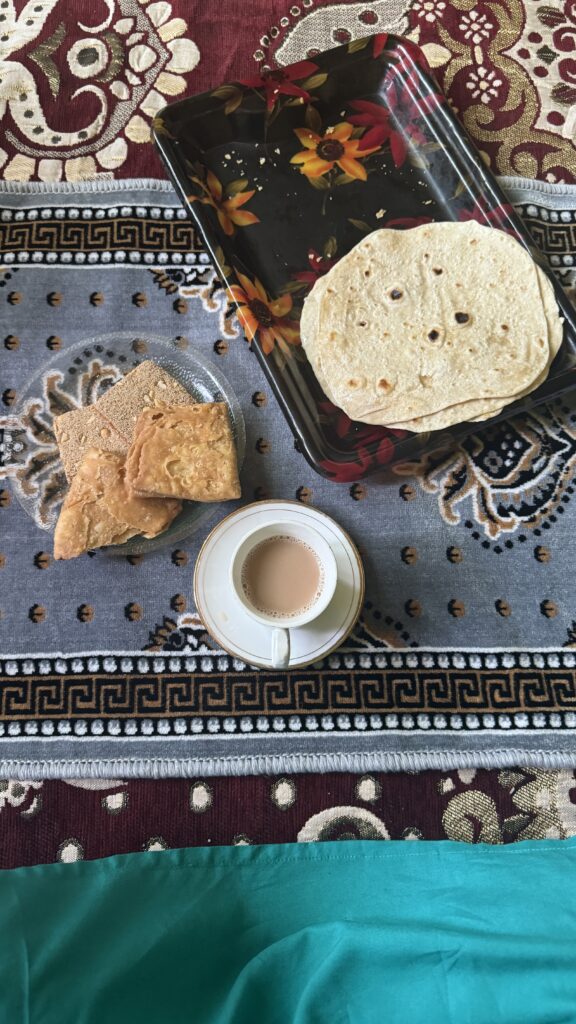
Spending time at Torry bhaiyya’s house was a wholesome experience that sure made my trip very memorable! Every moment I spent in the city, going around the Dal lake for the 8462974508273328469843759th time :P, meeting every person that I did through the trip, hearing about their experiences and making many of my own made the trip to Srinagar super special. This trip will forever have a special place in my heart because I went there with a certain mindset and came back with a whole new perspective of things!
